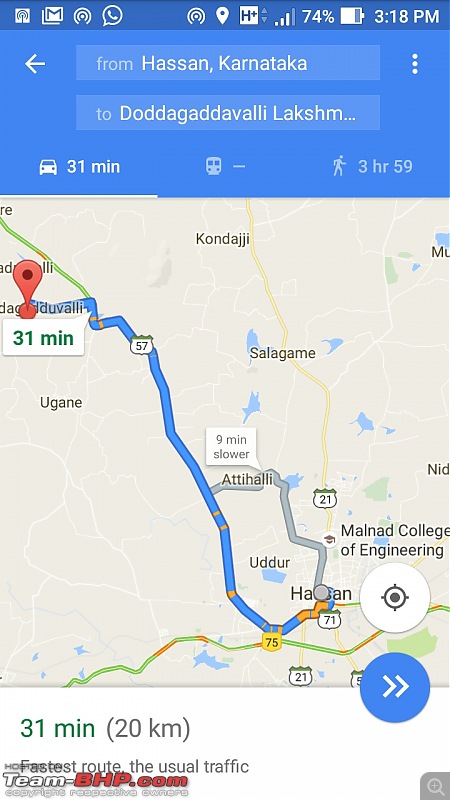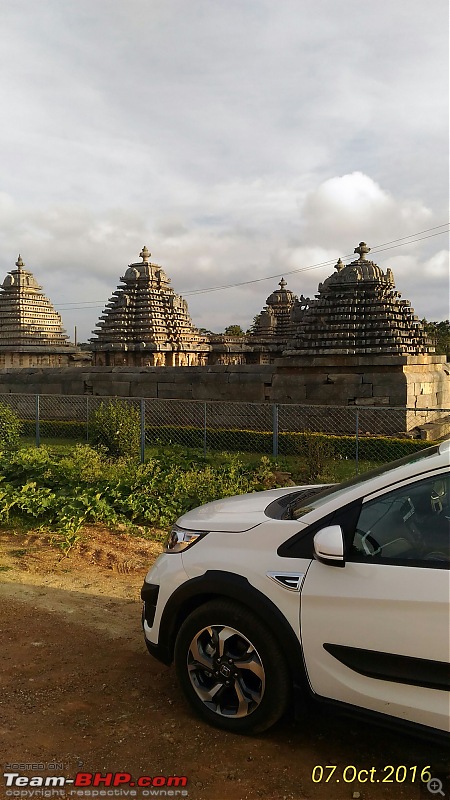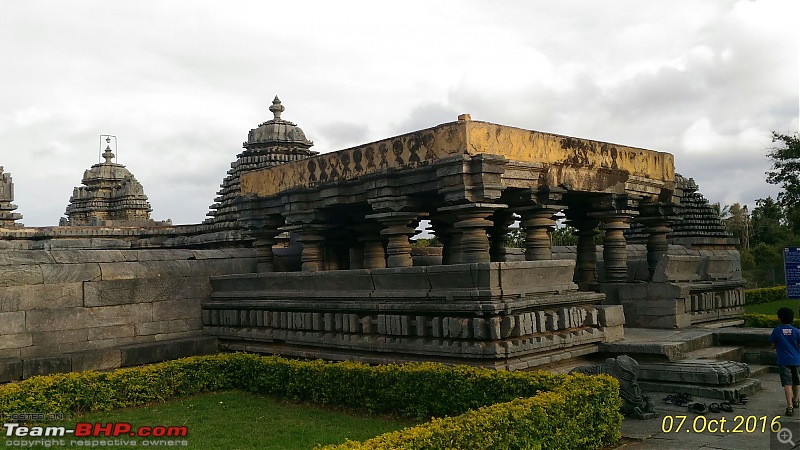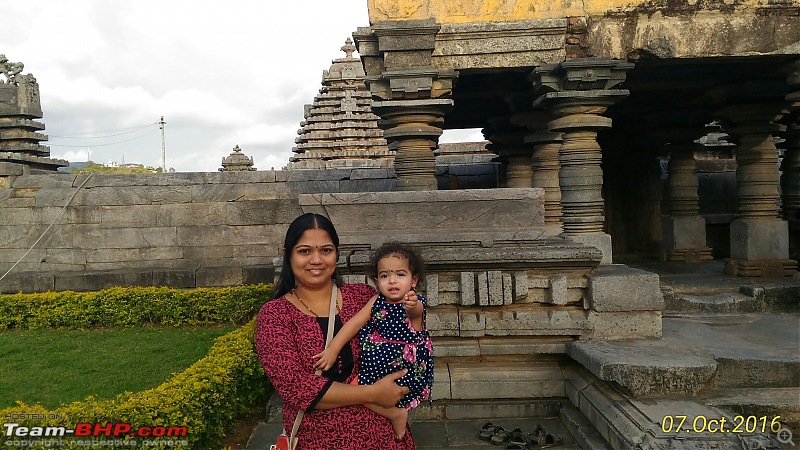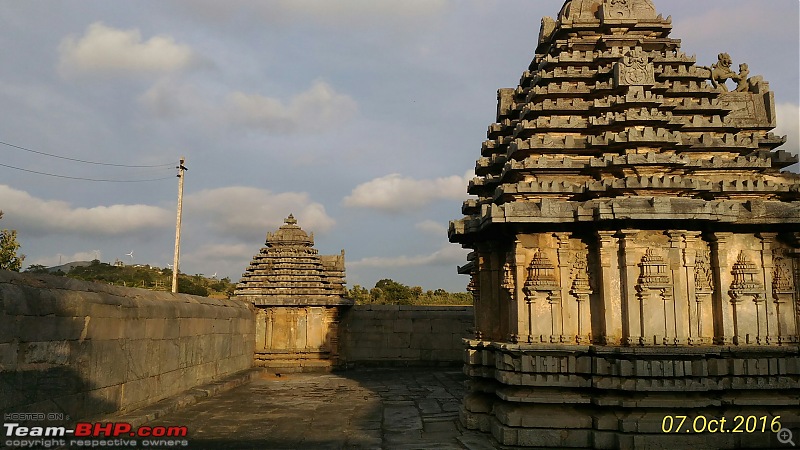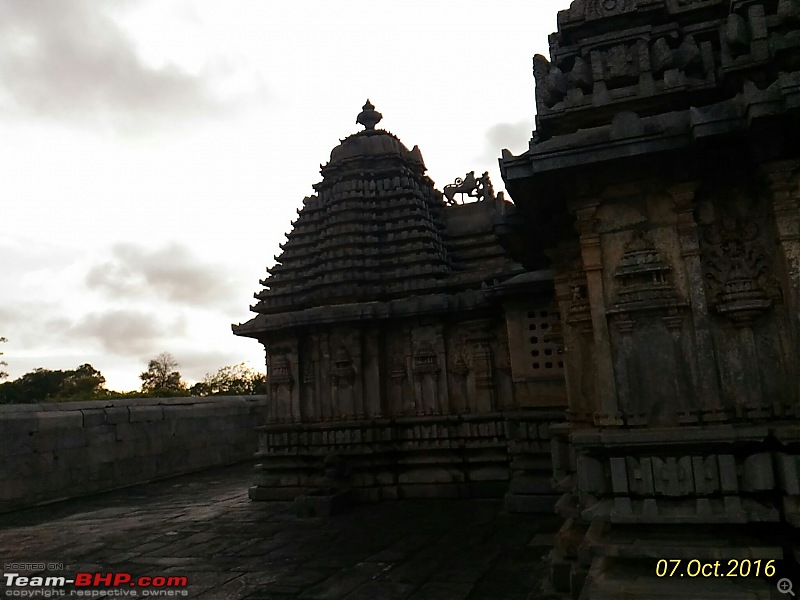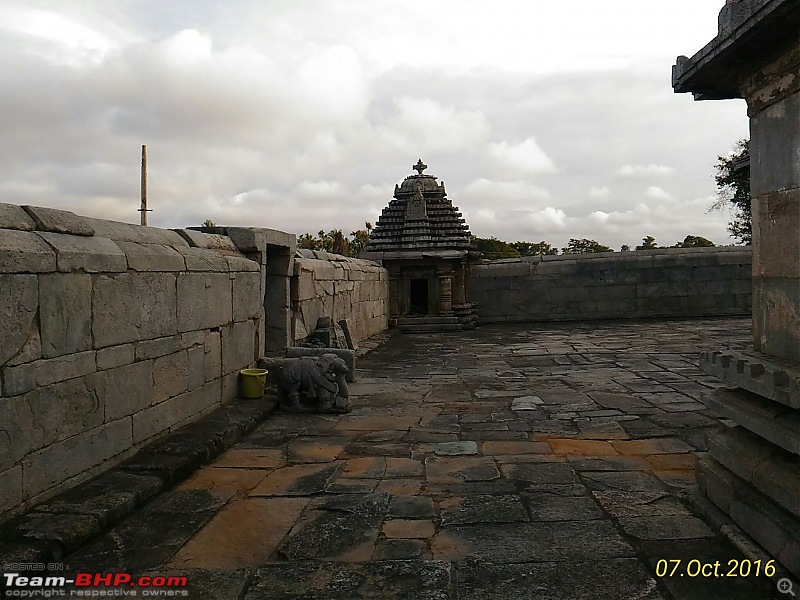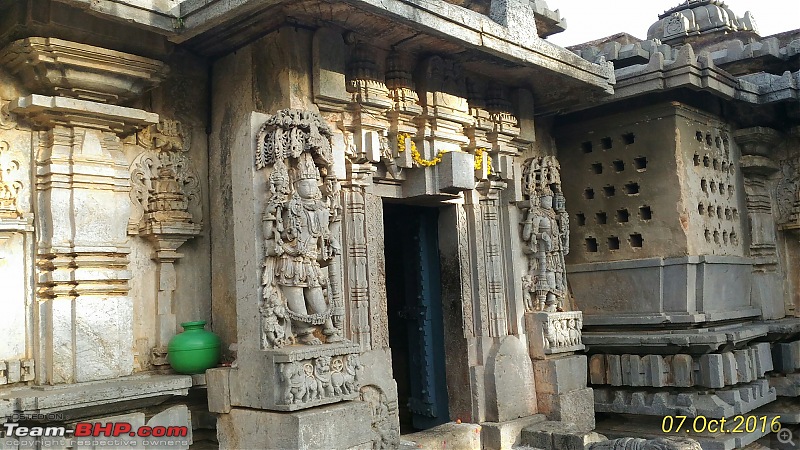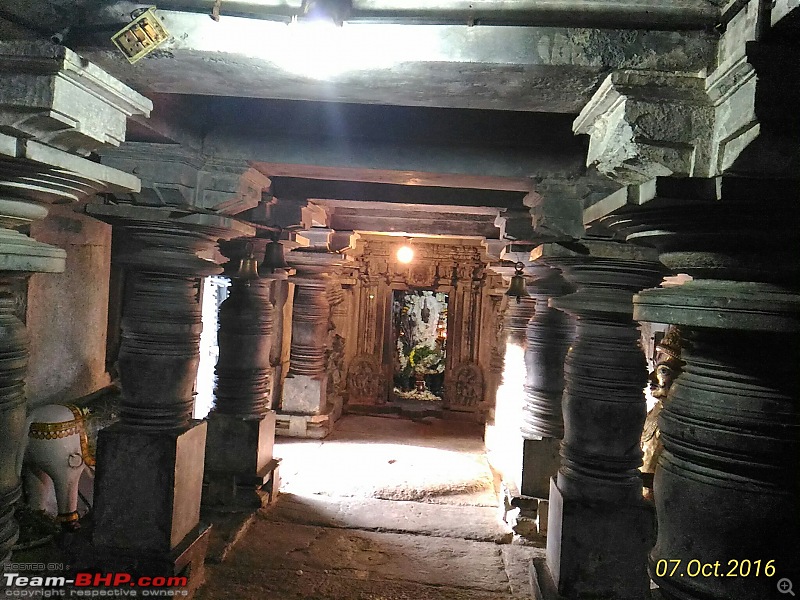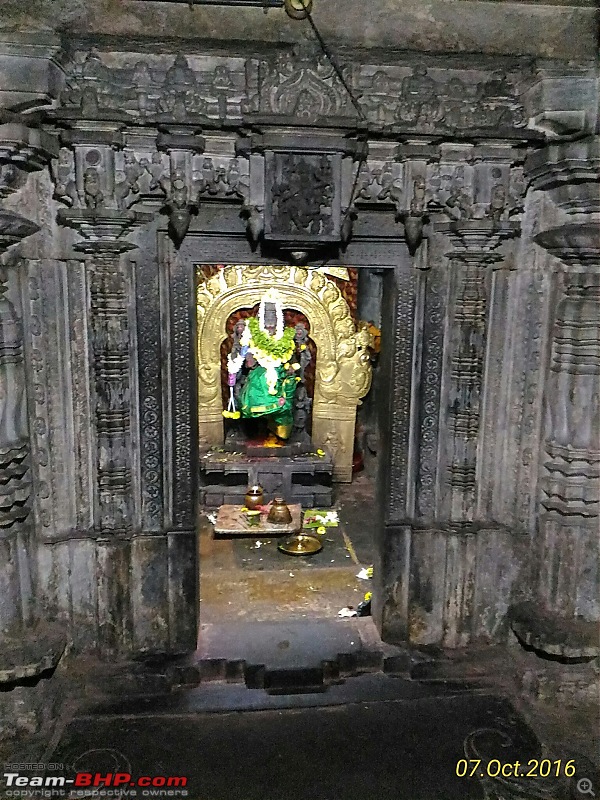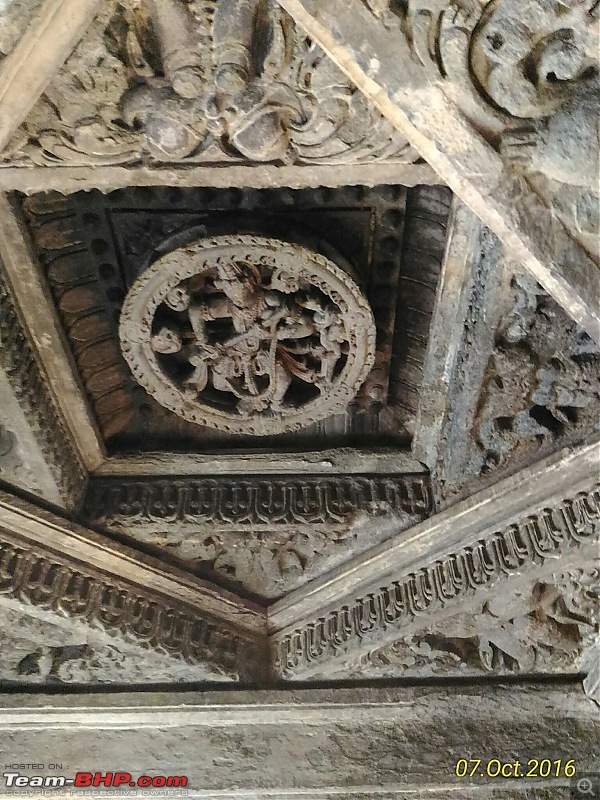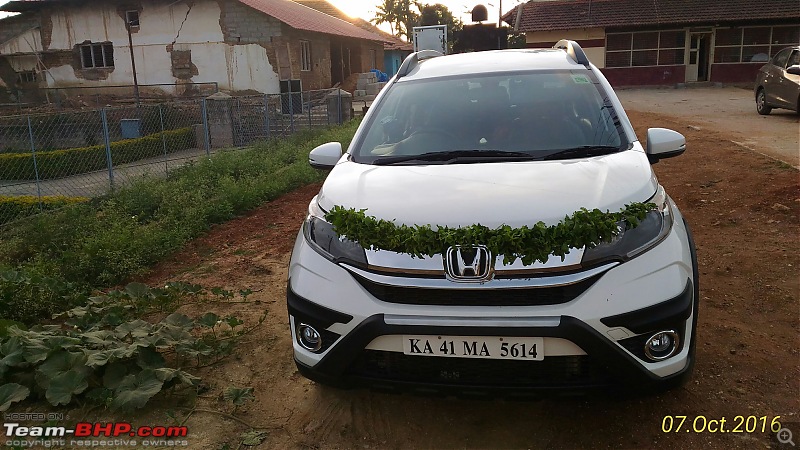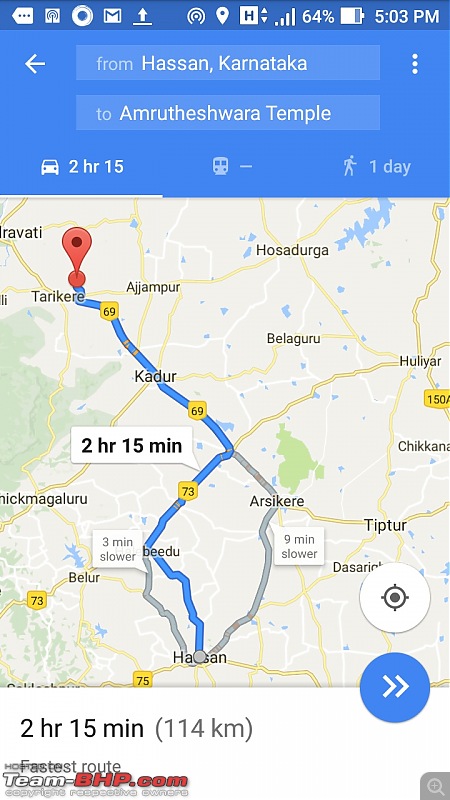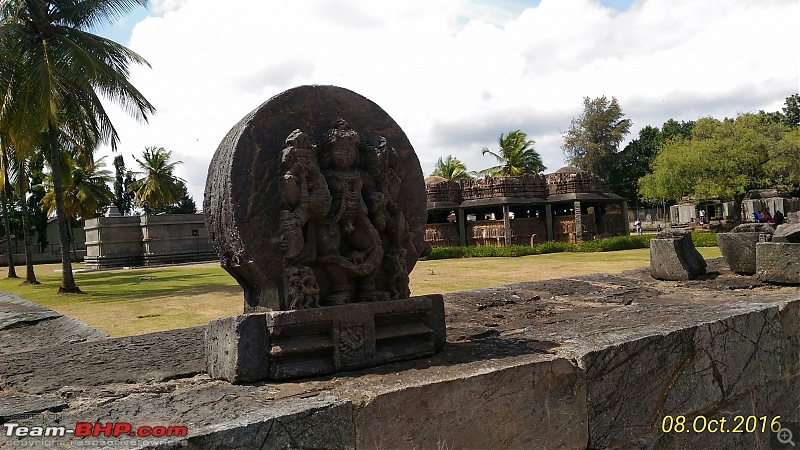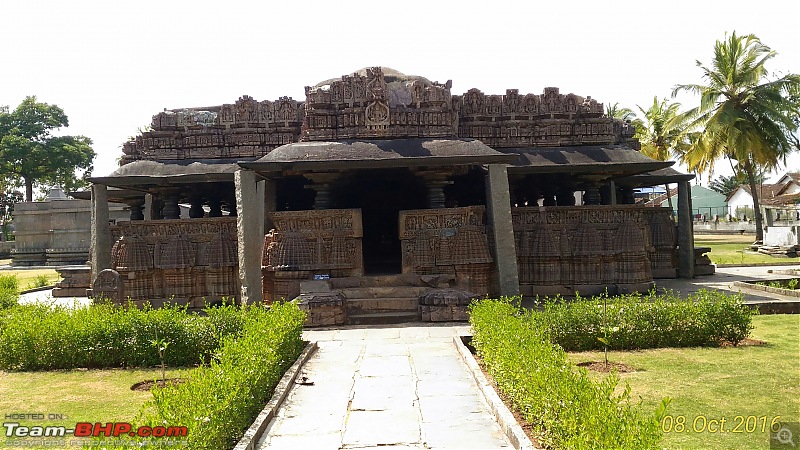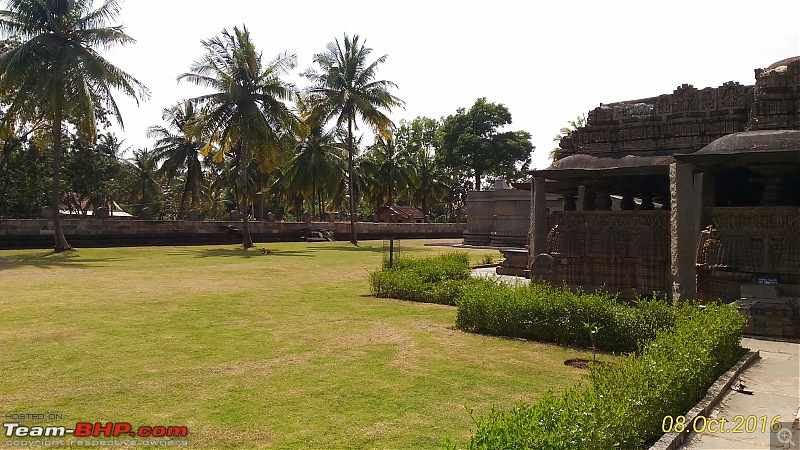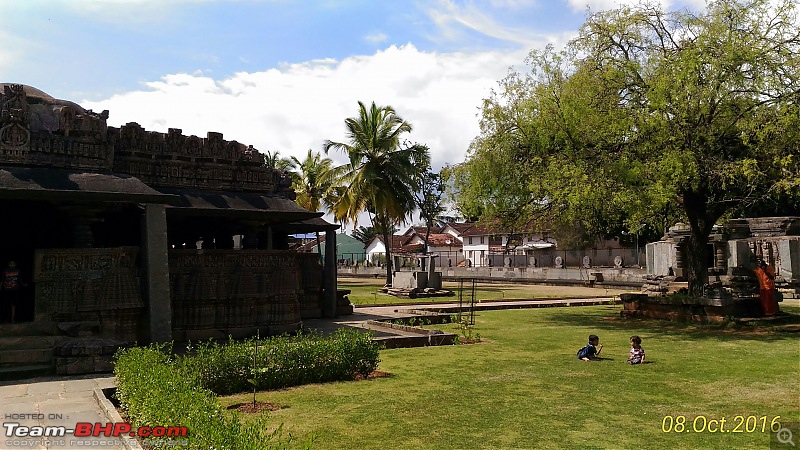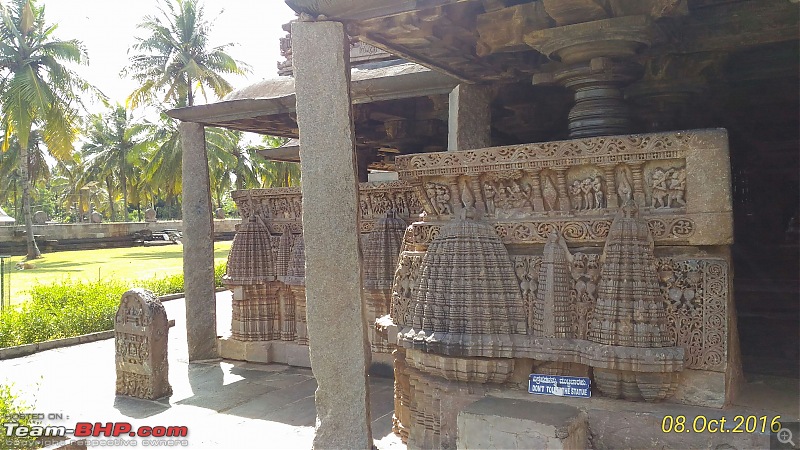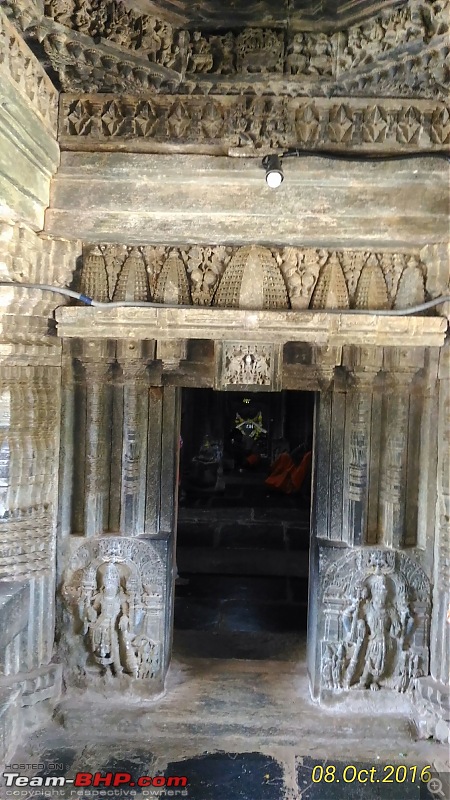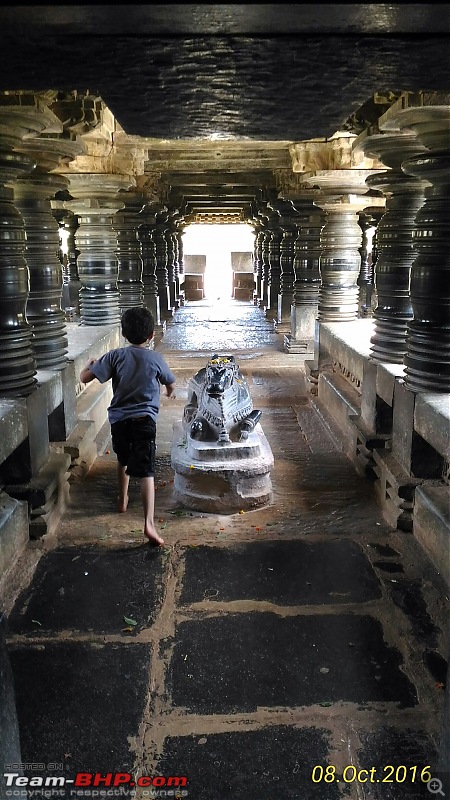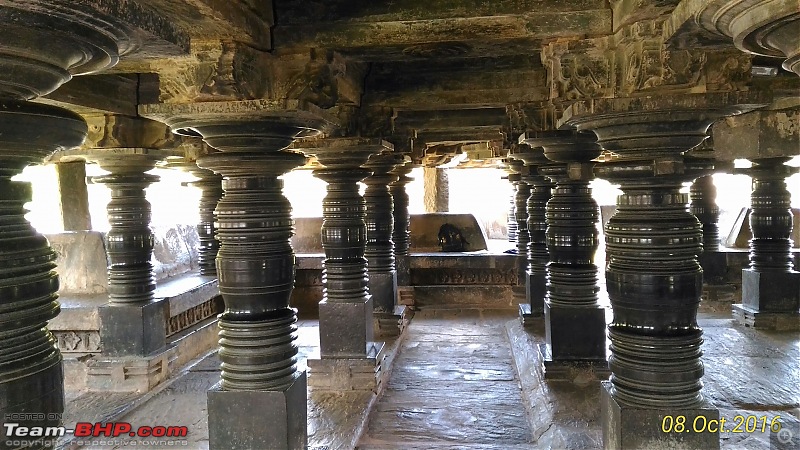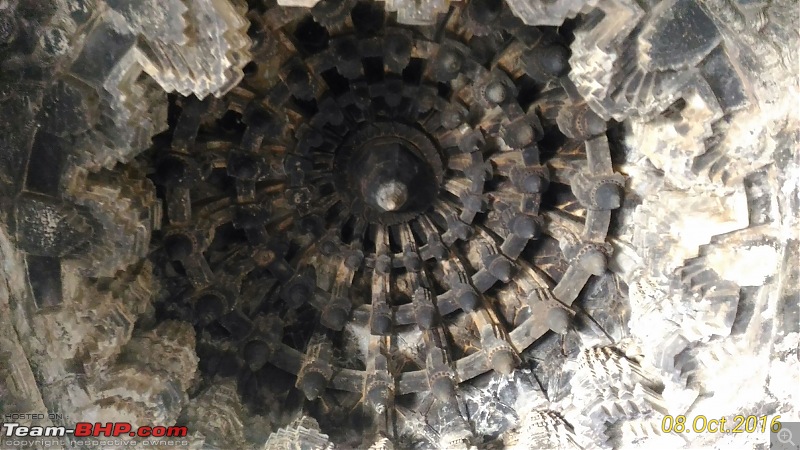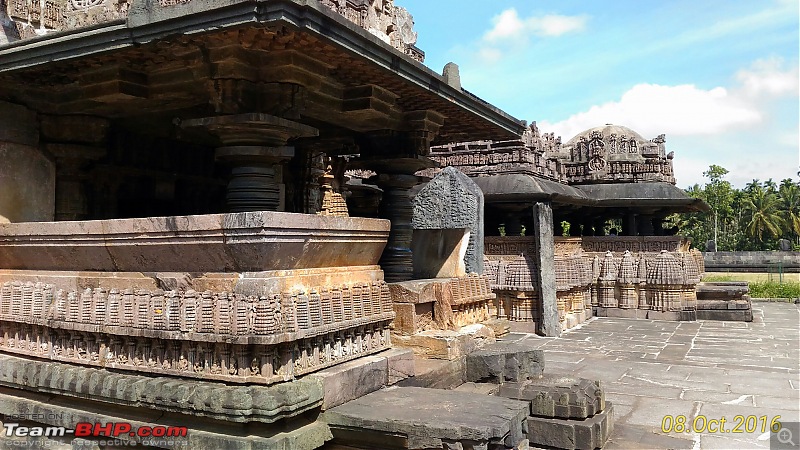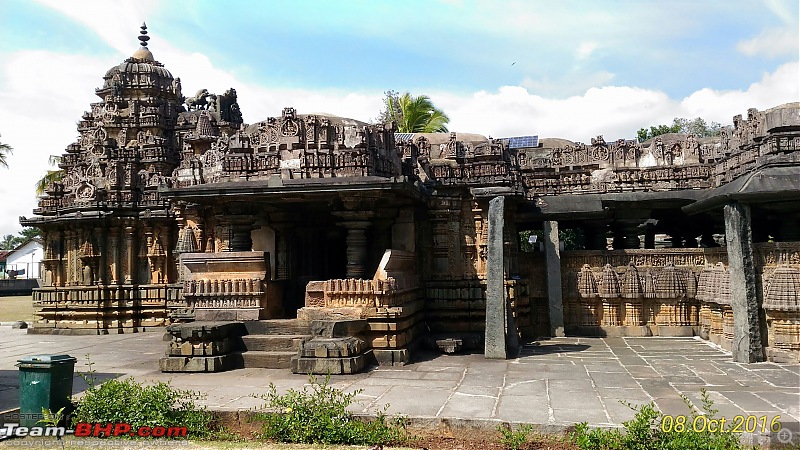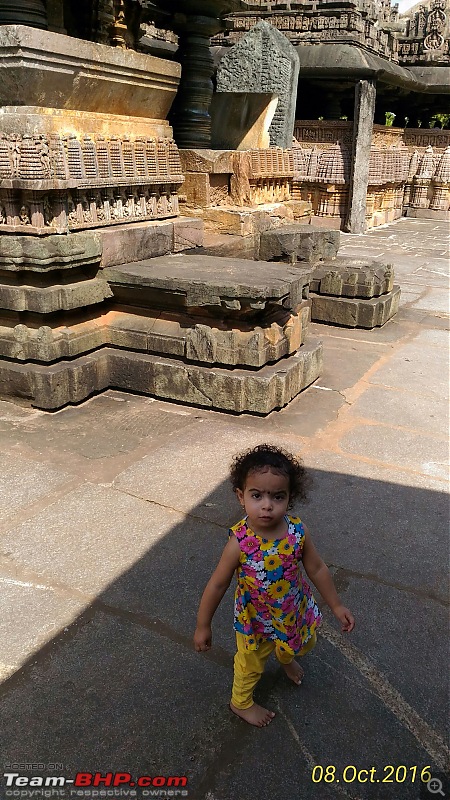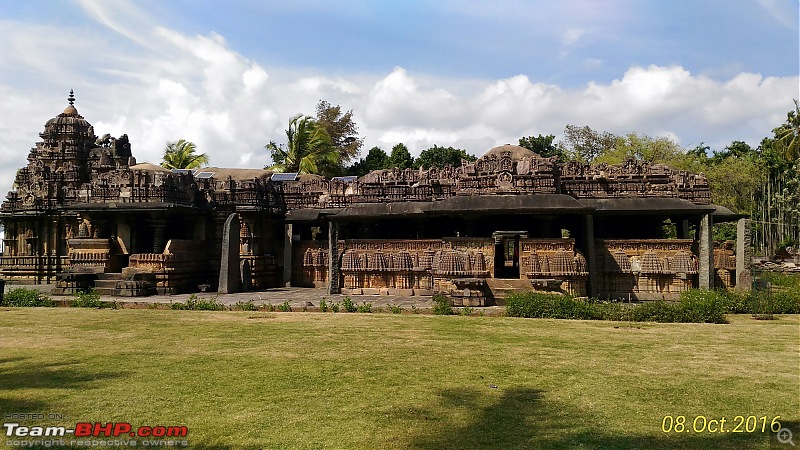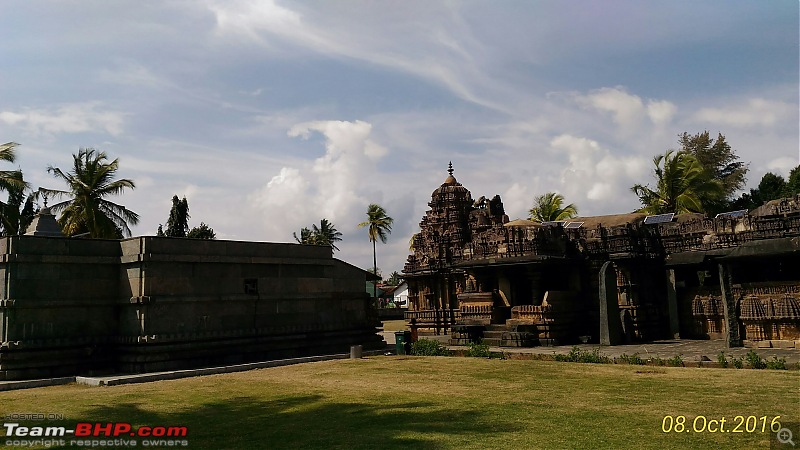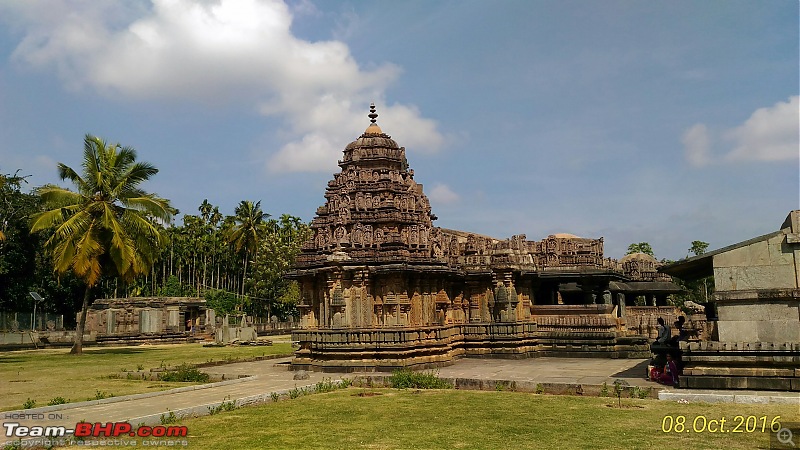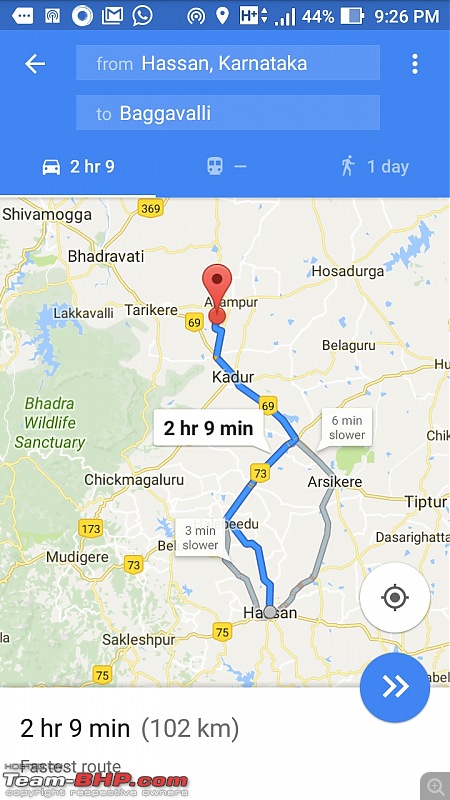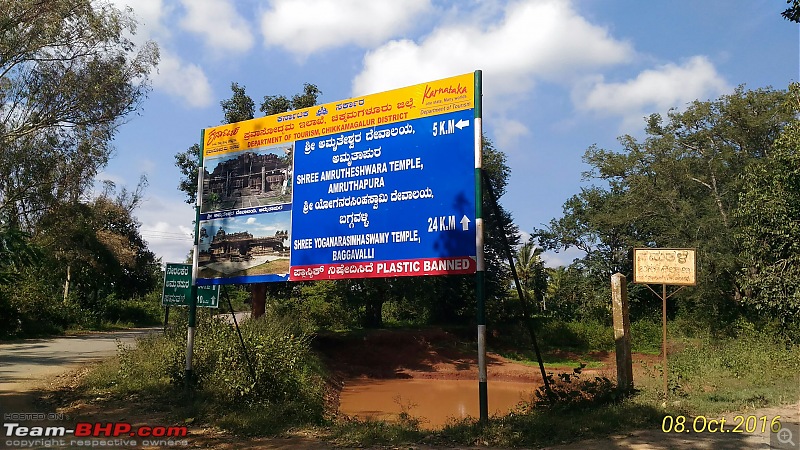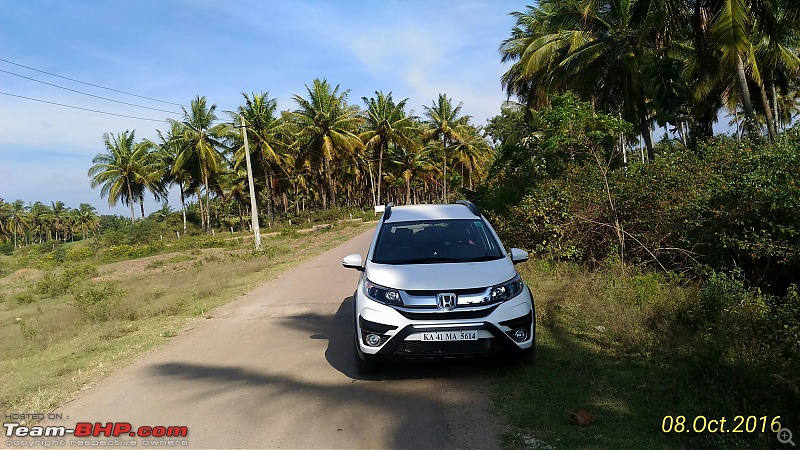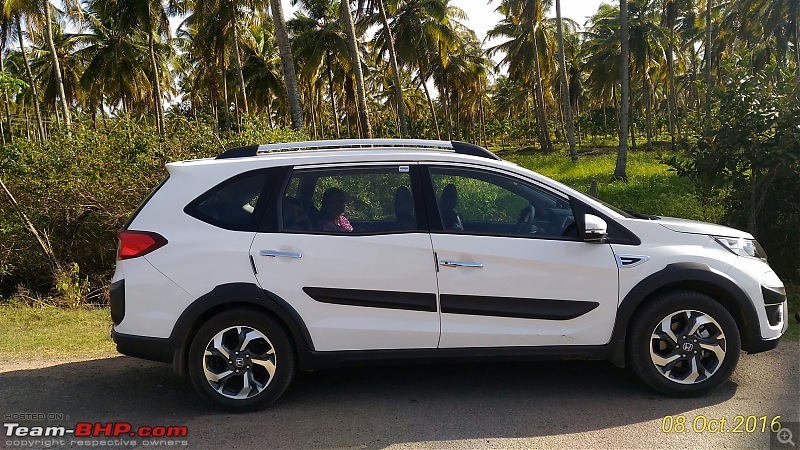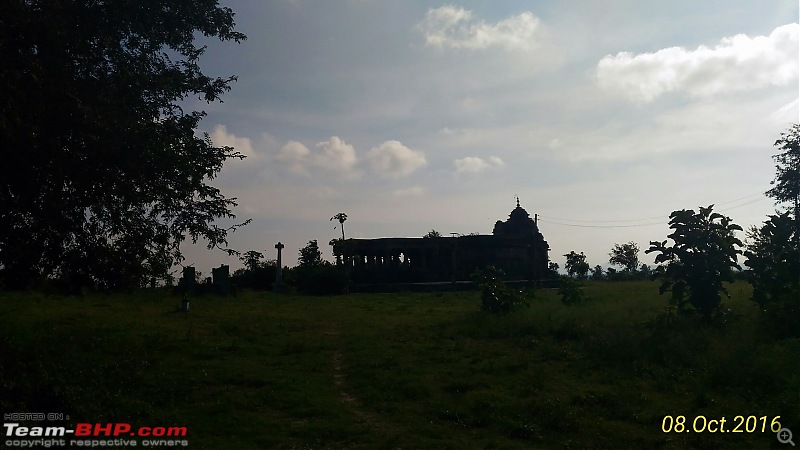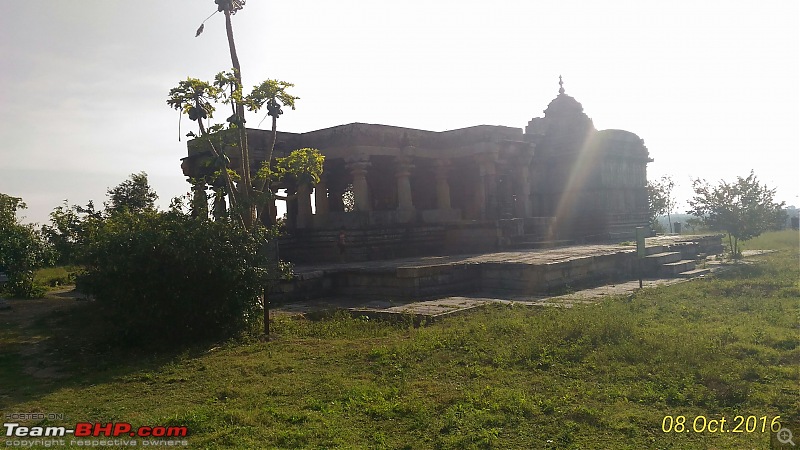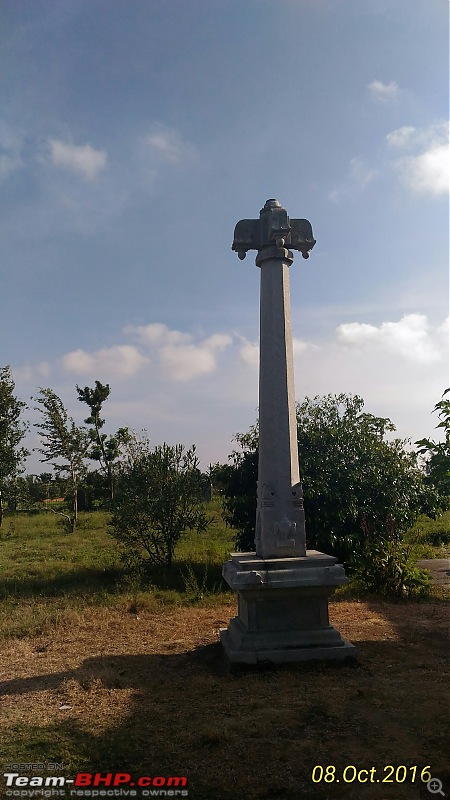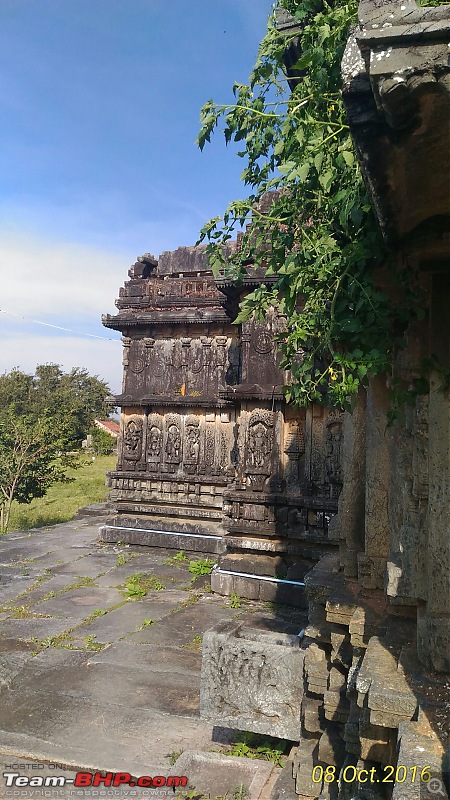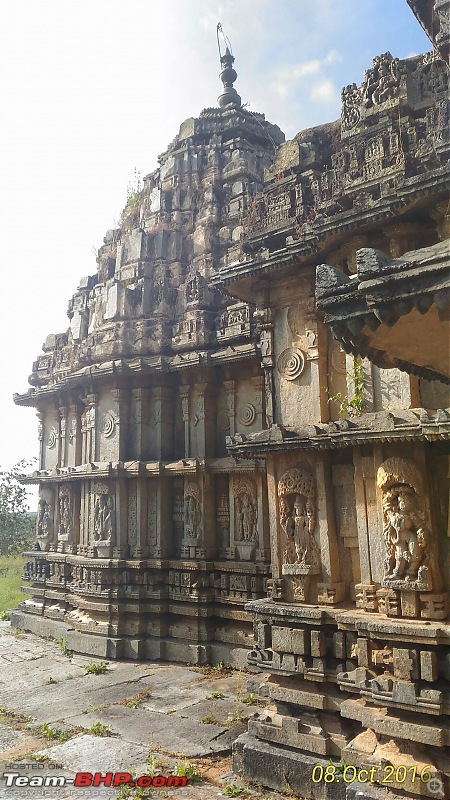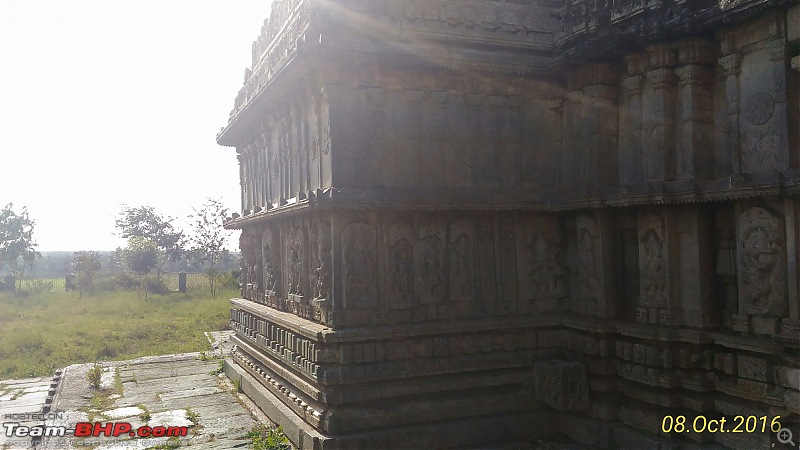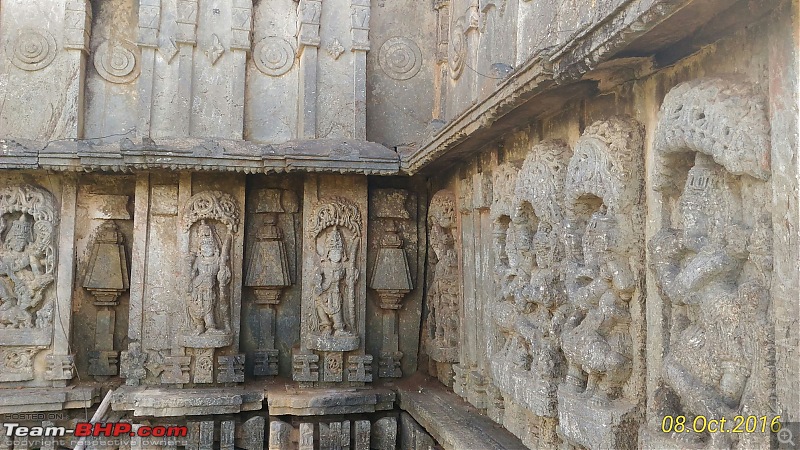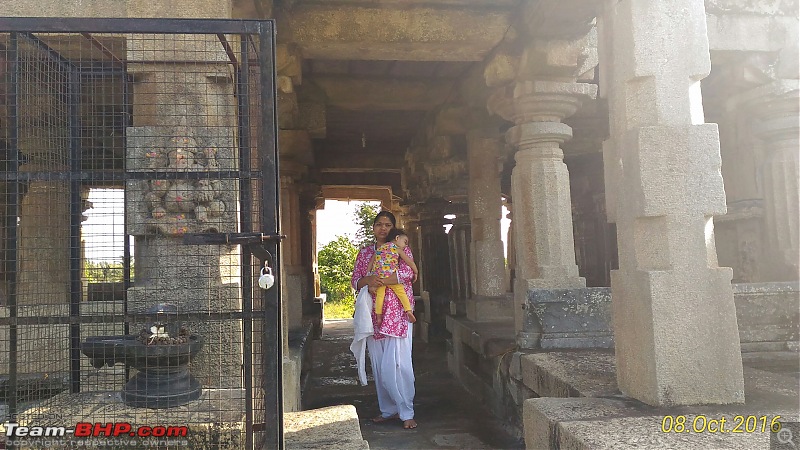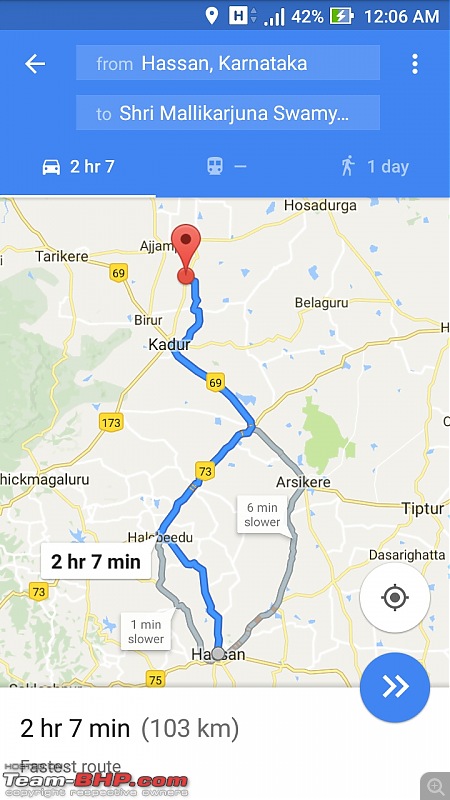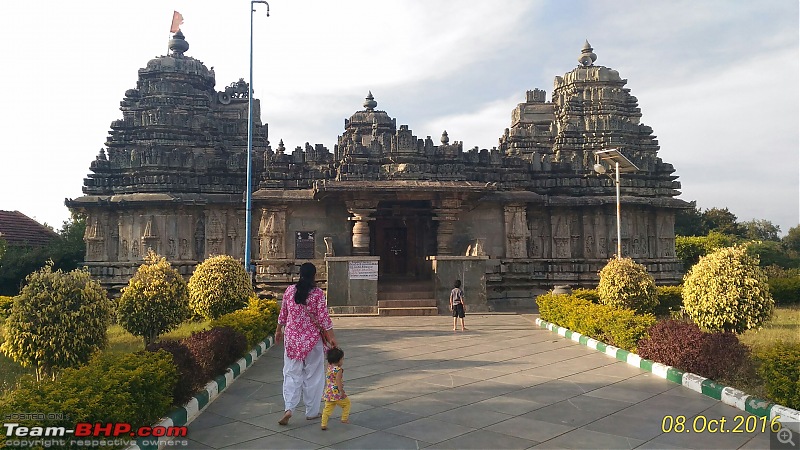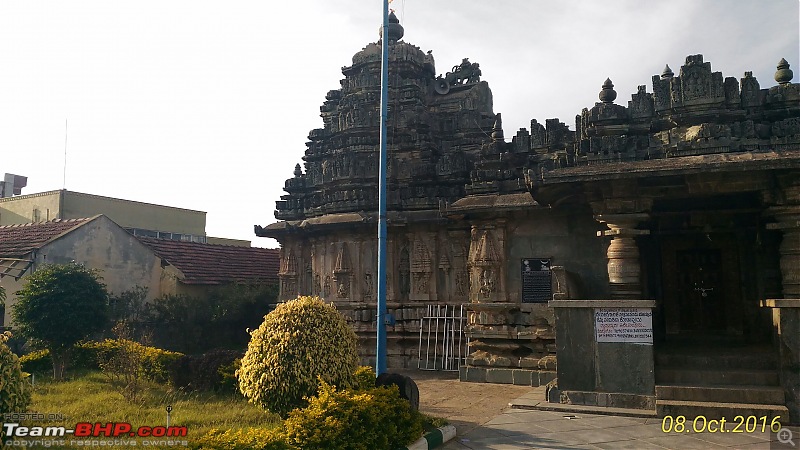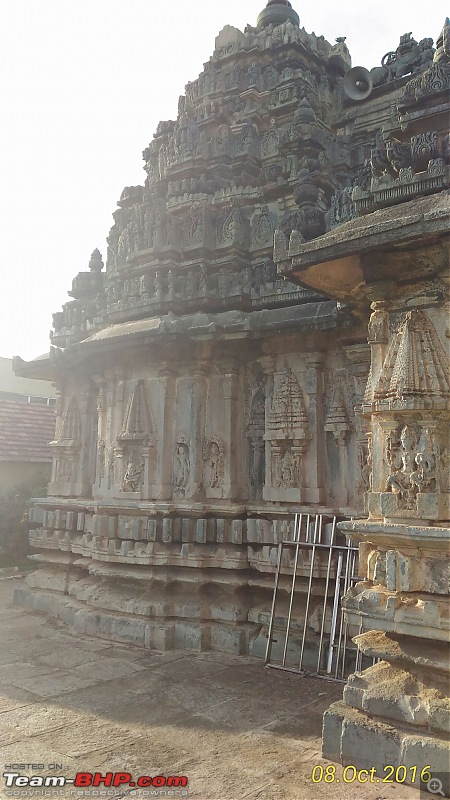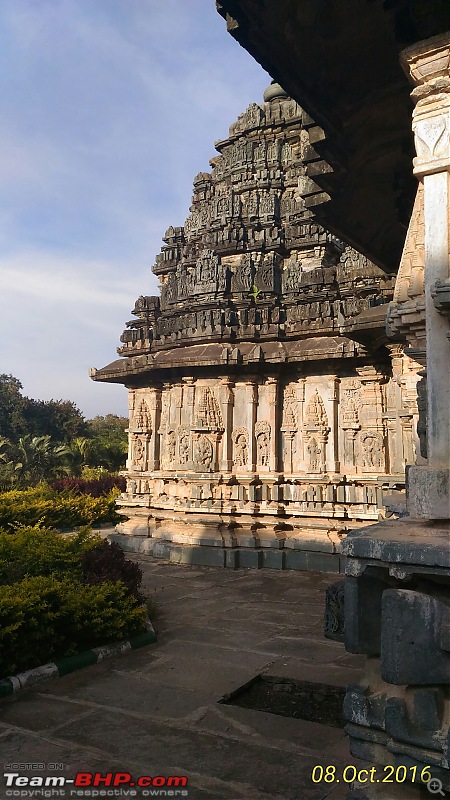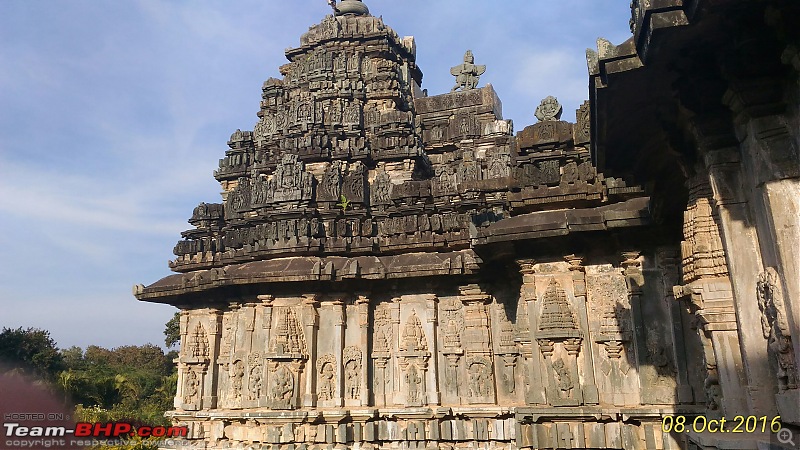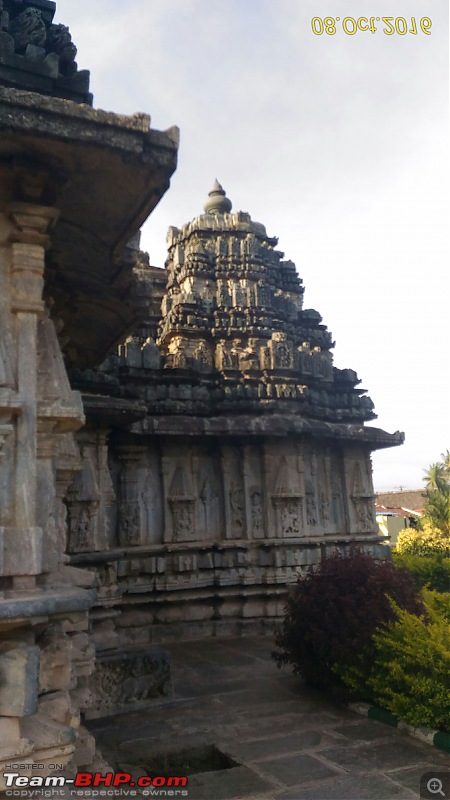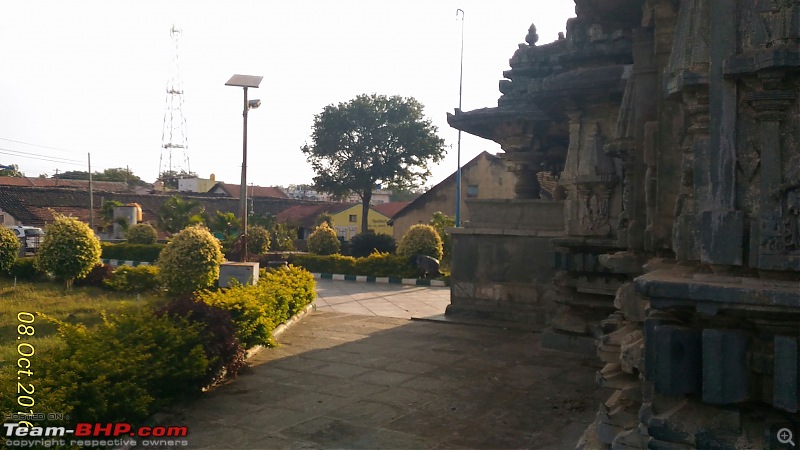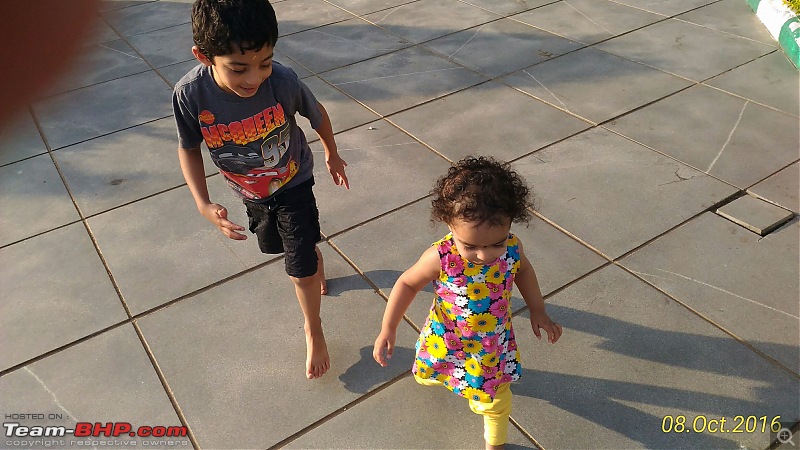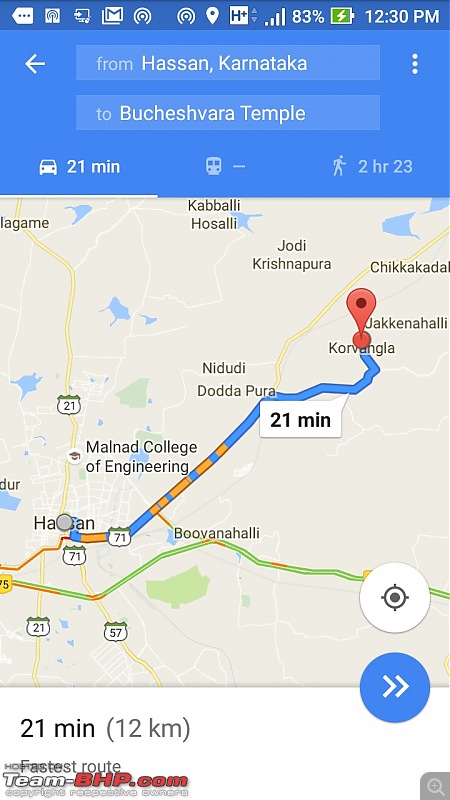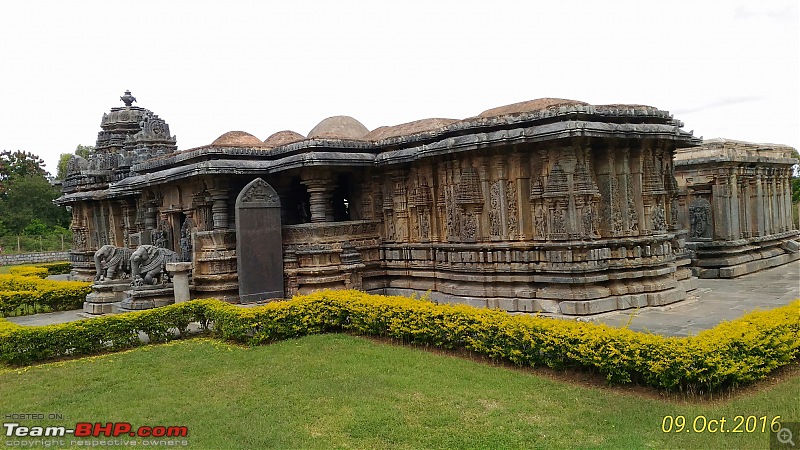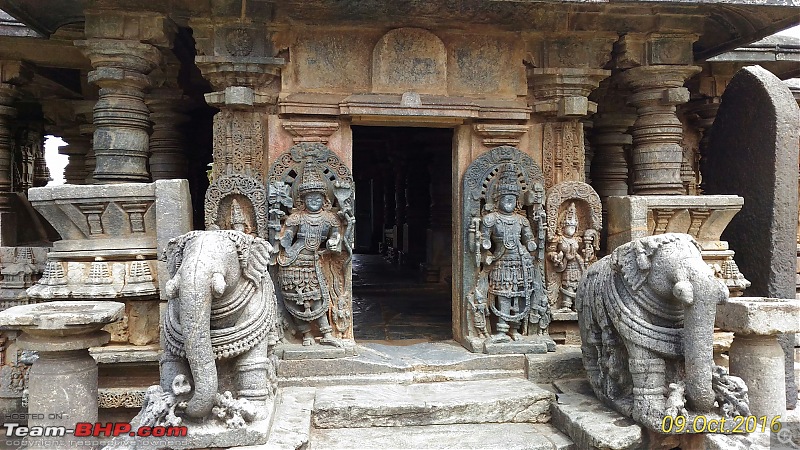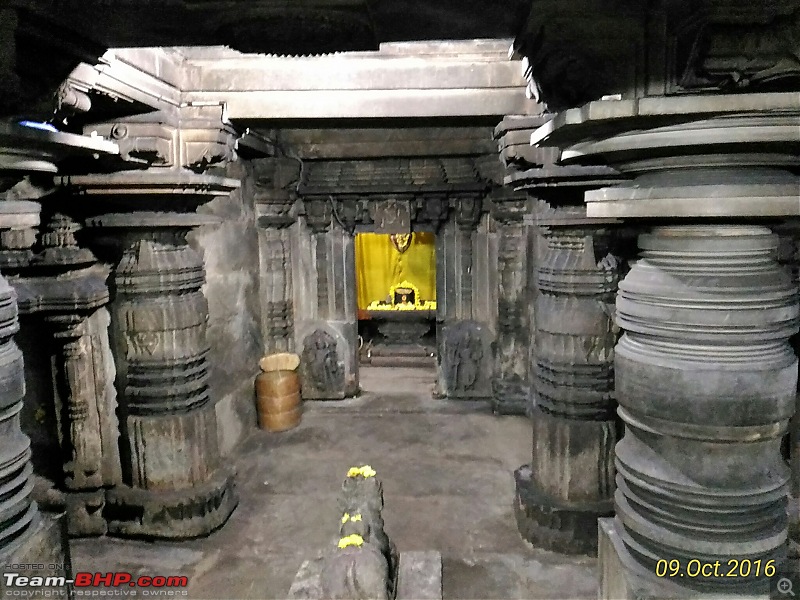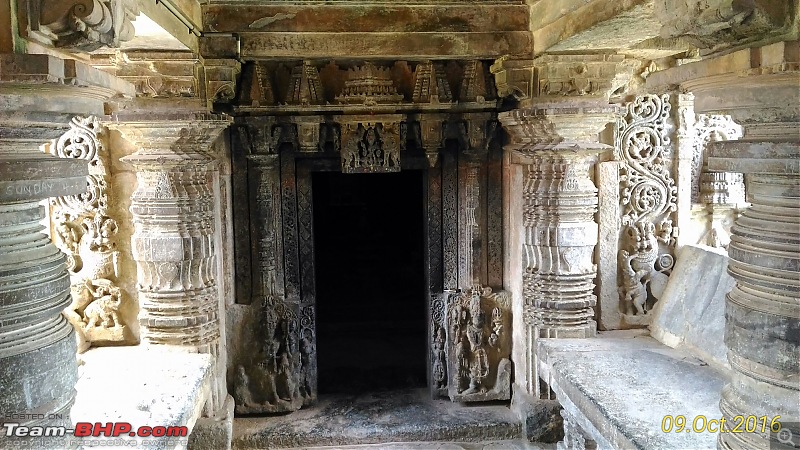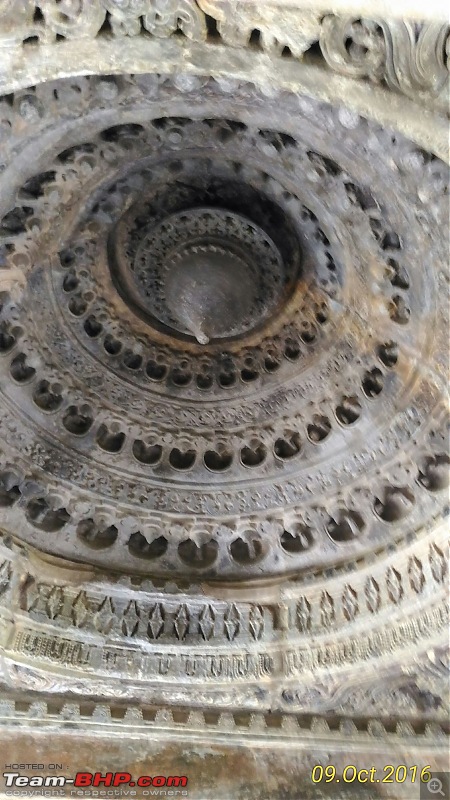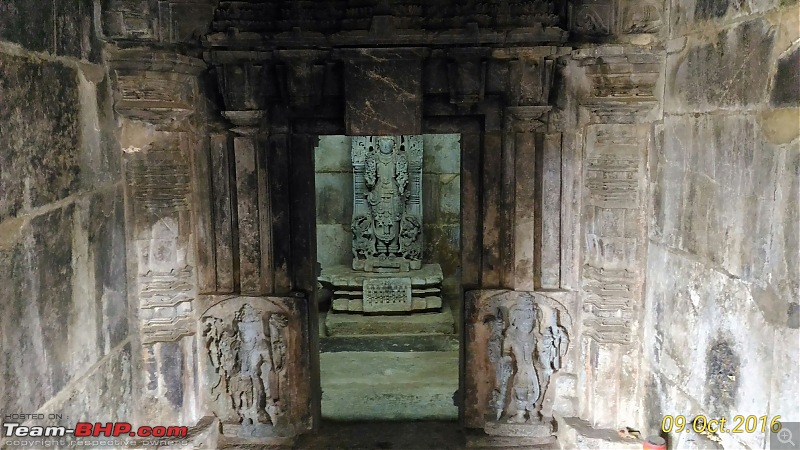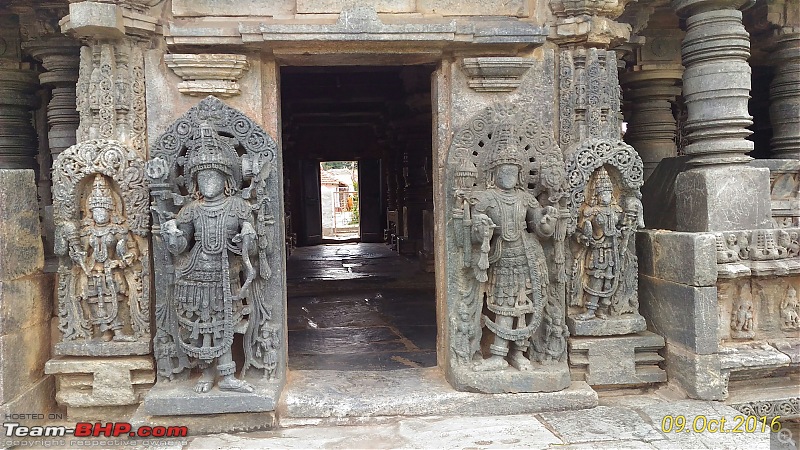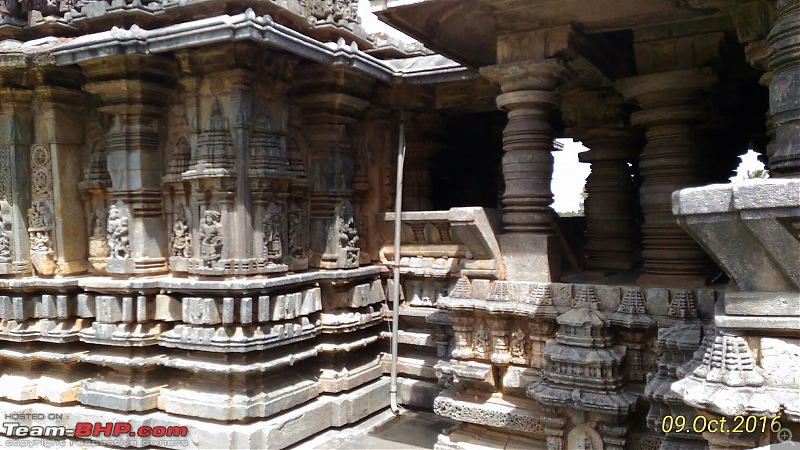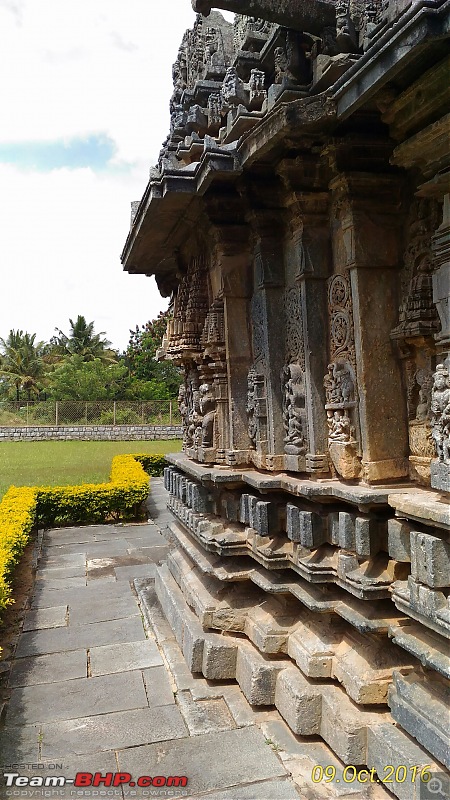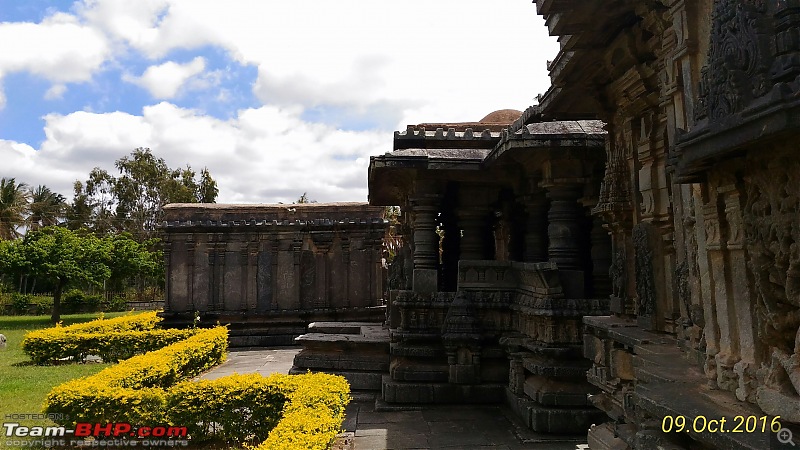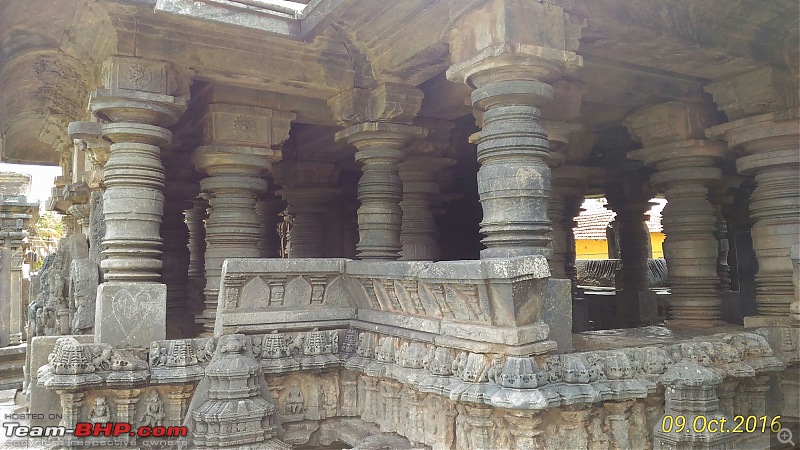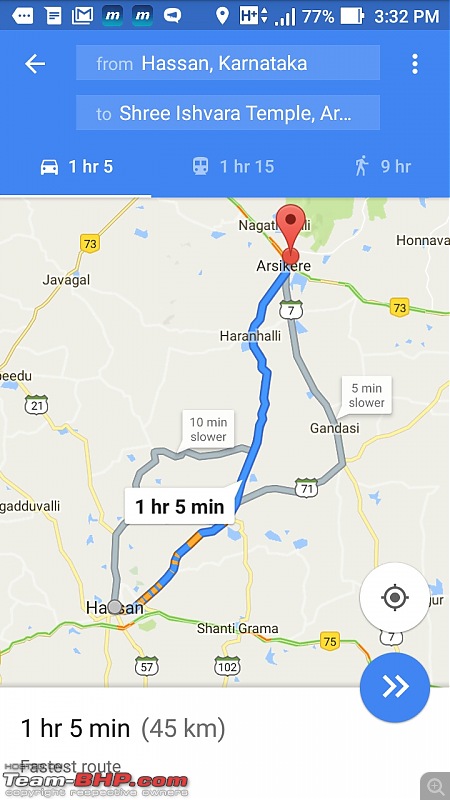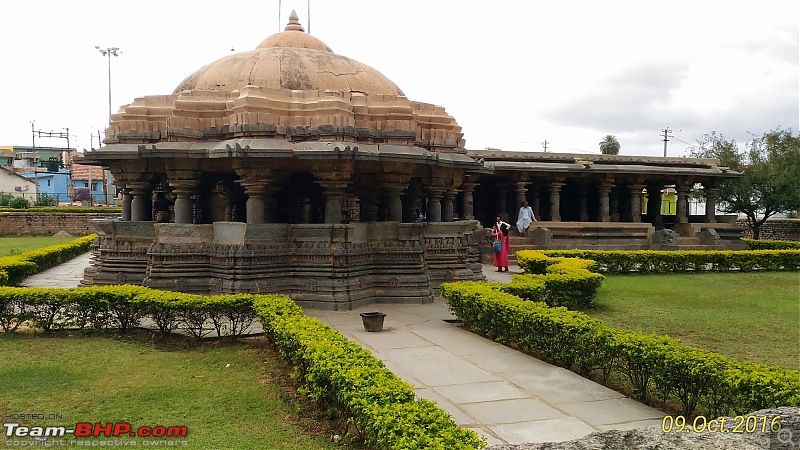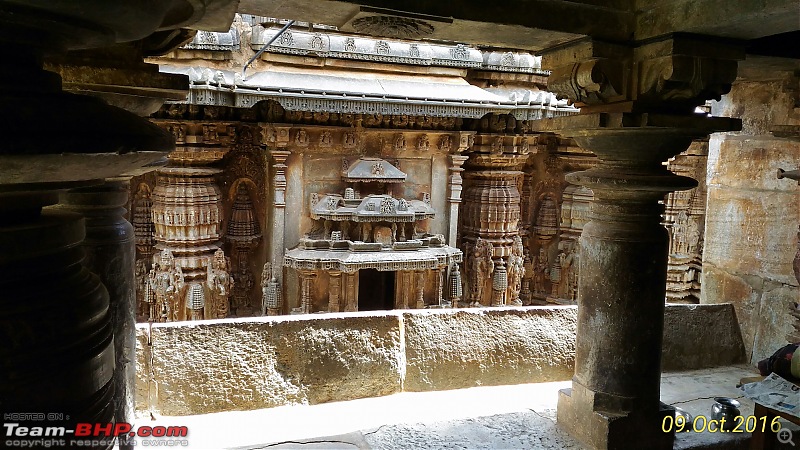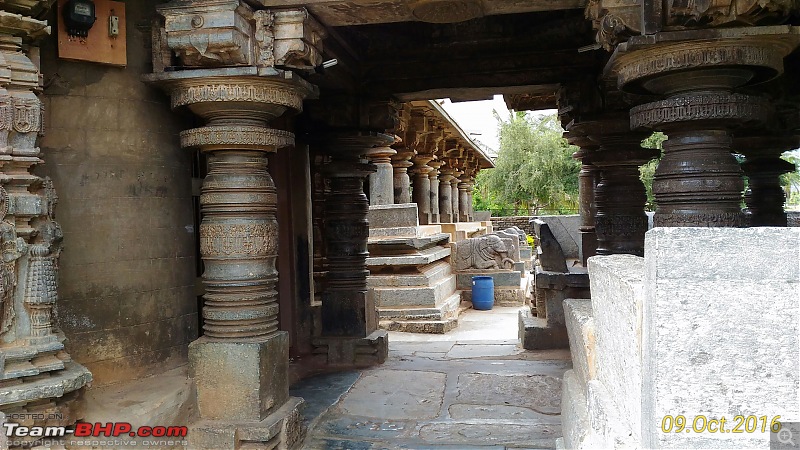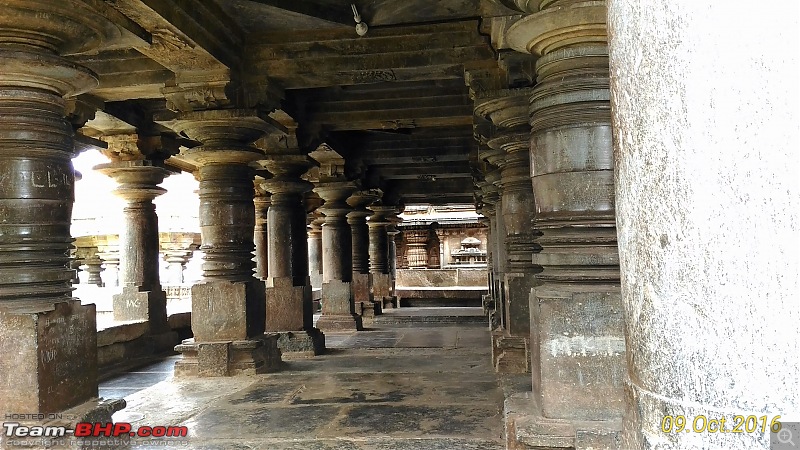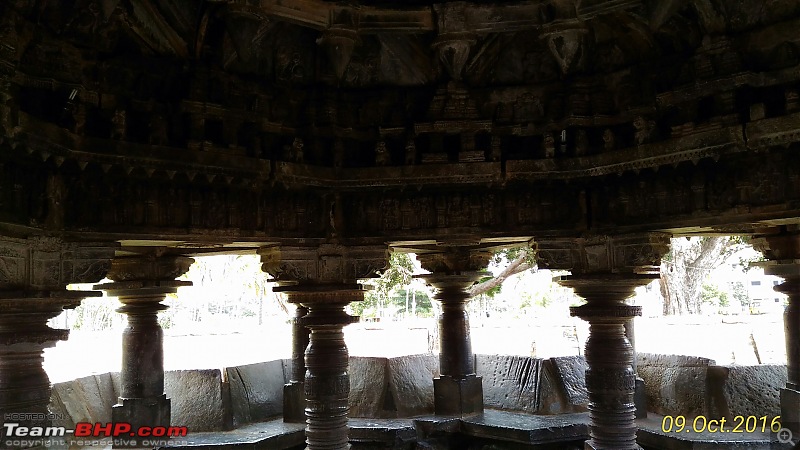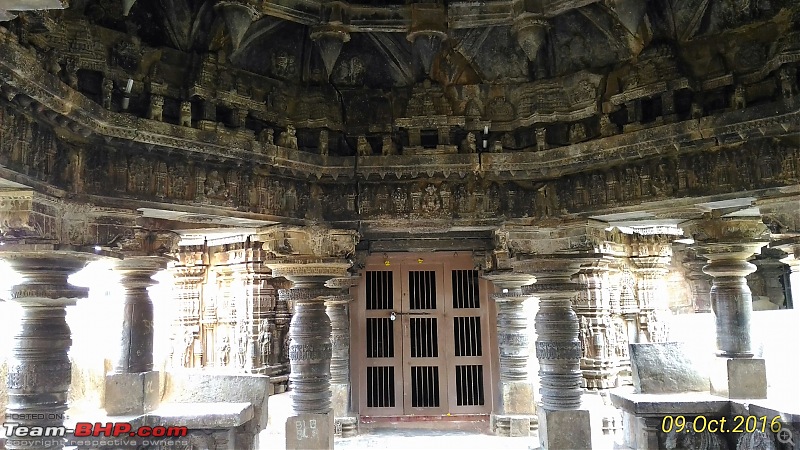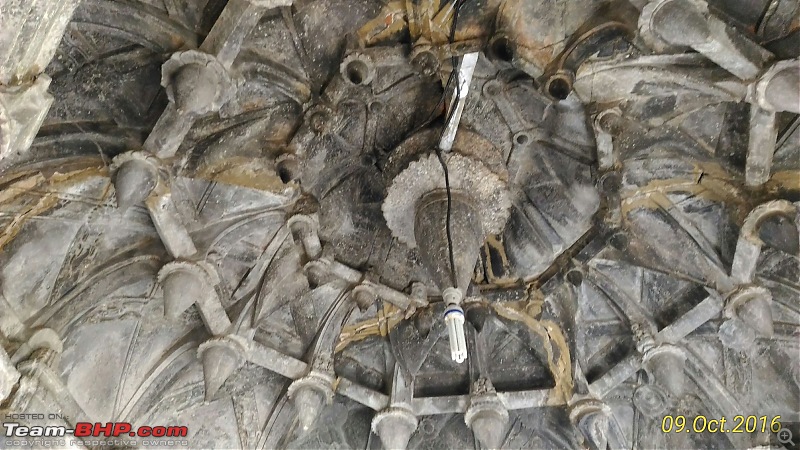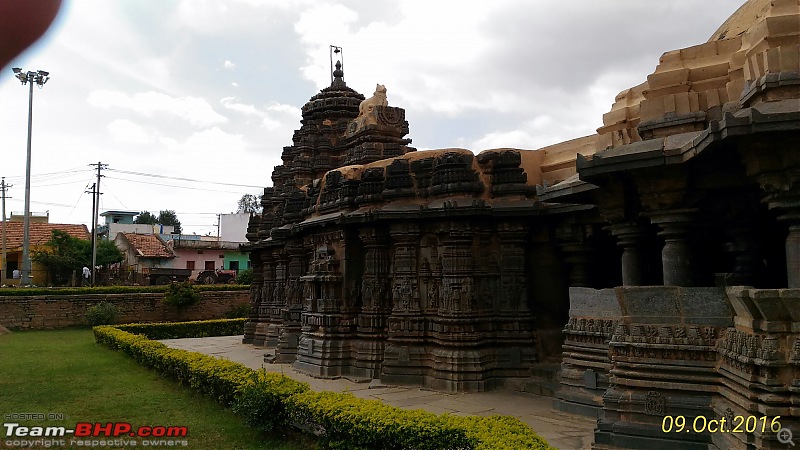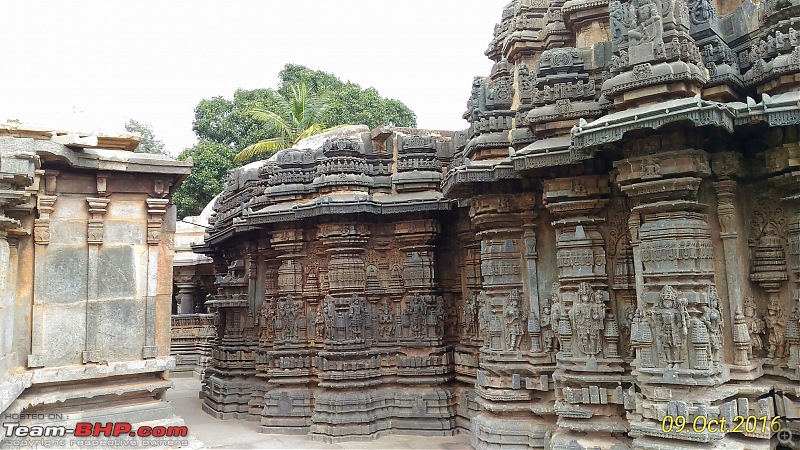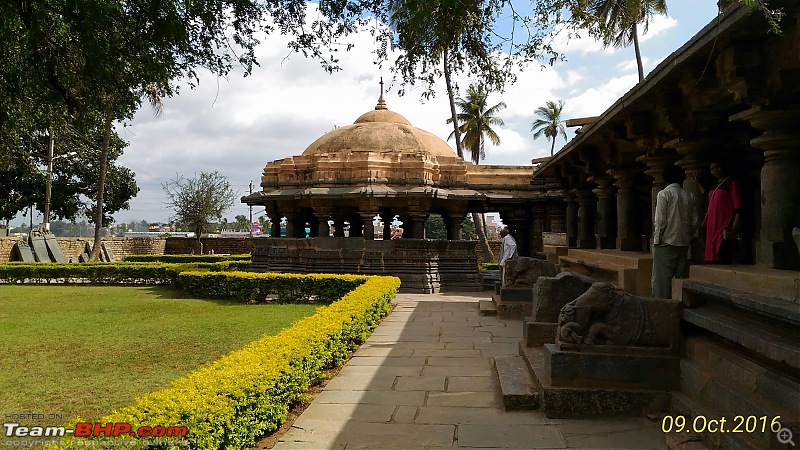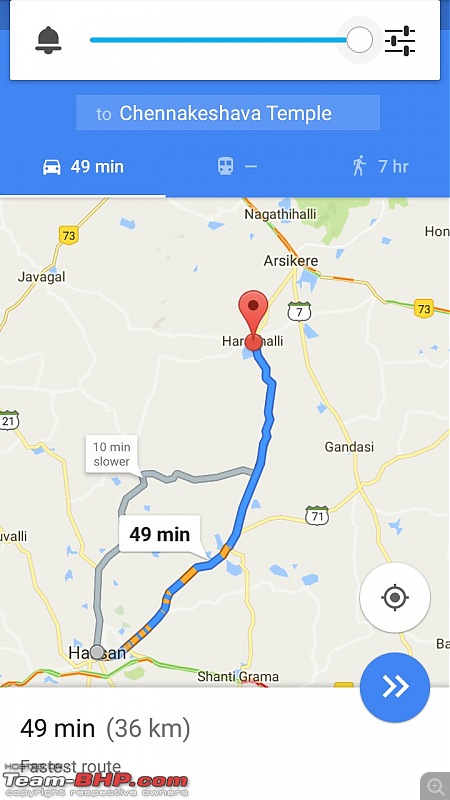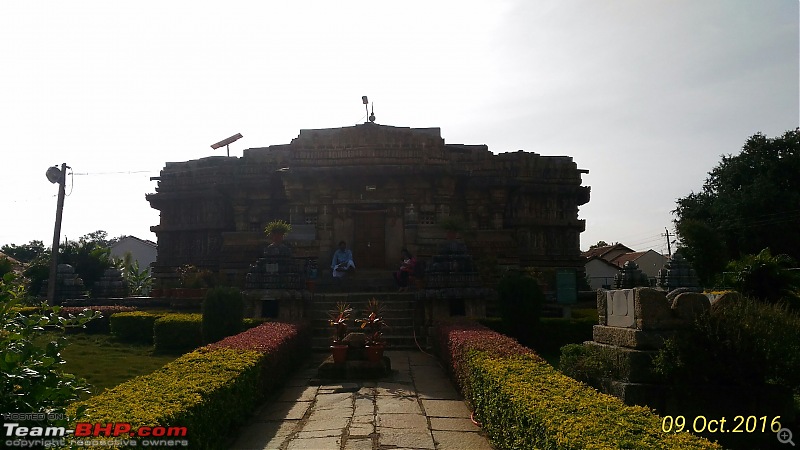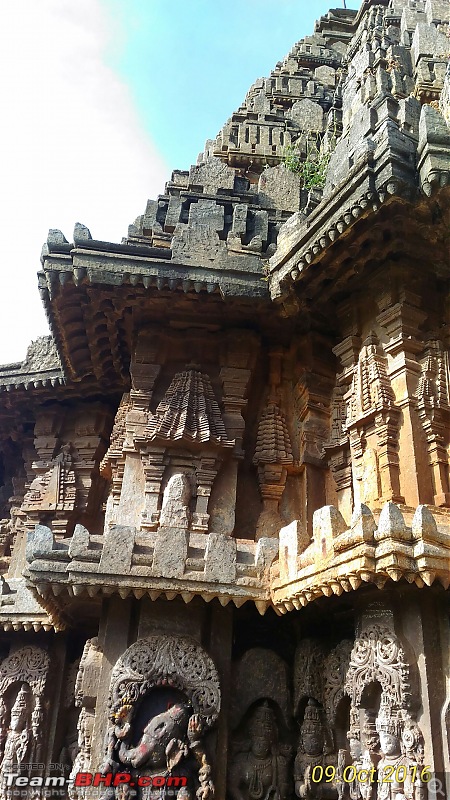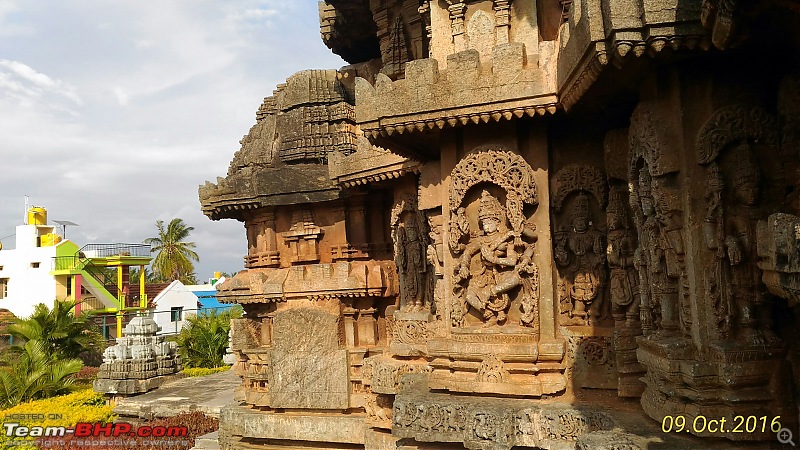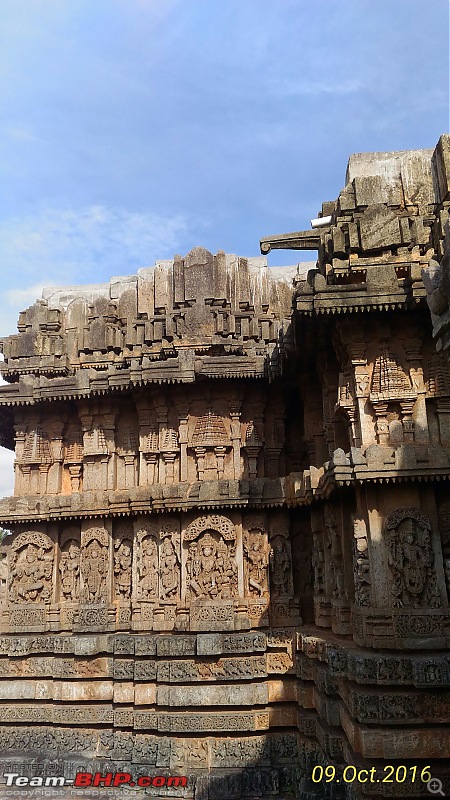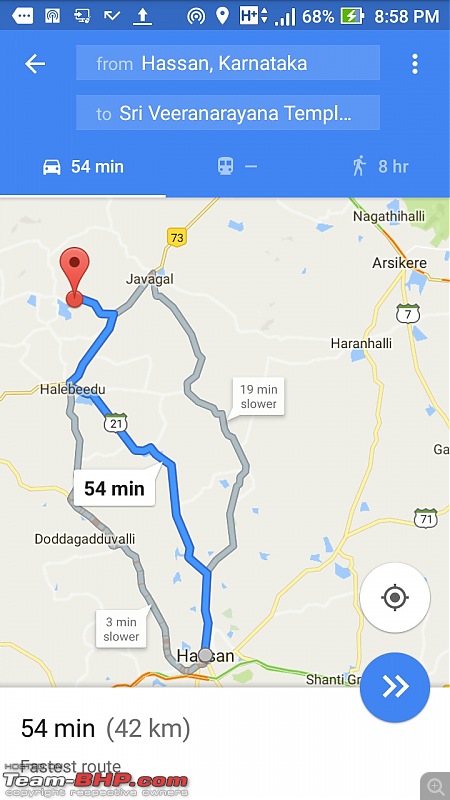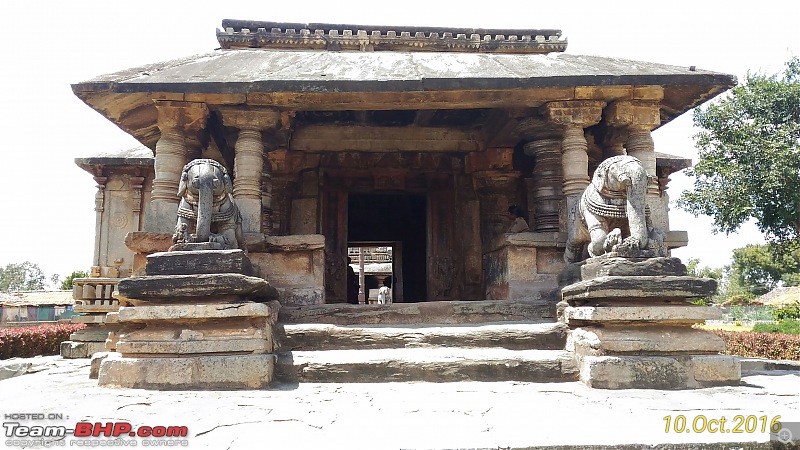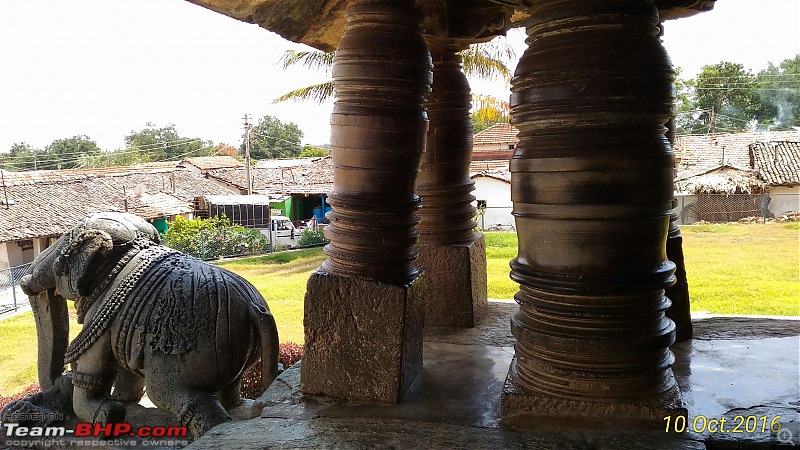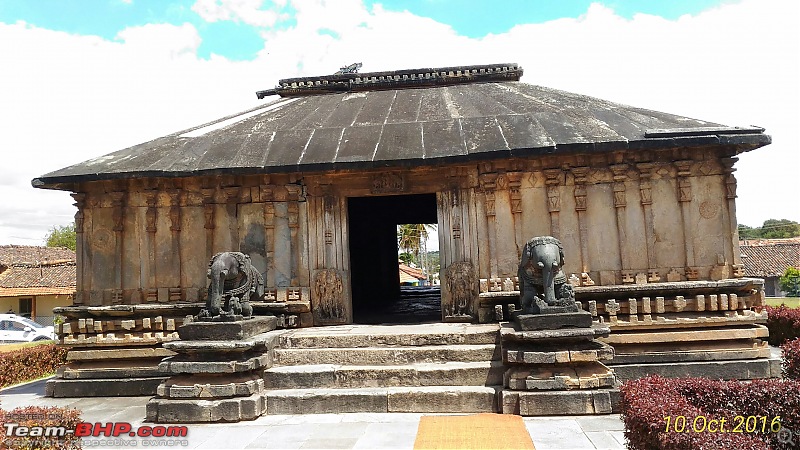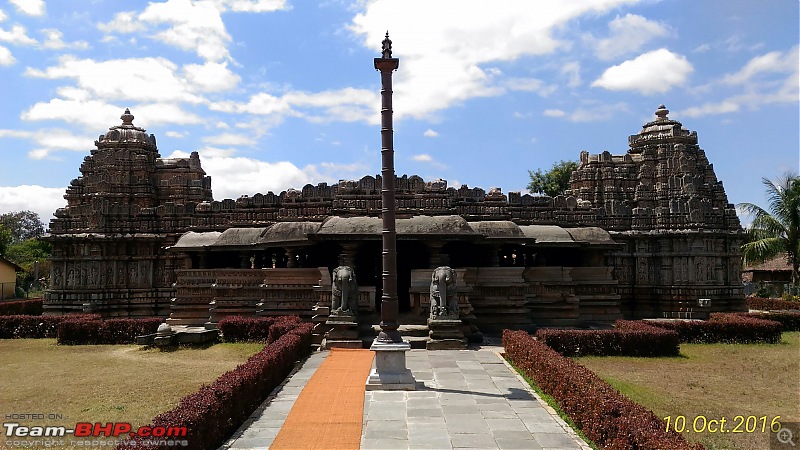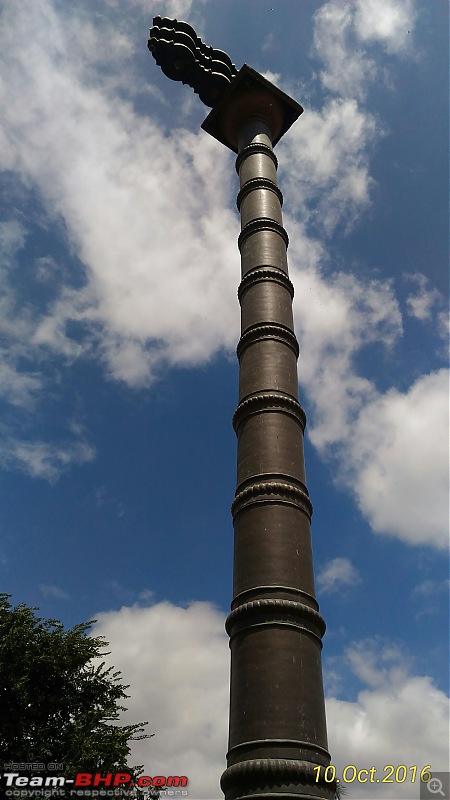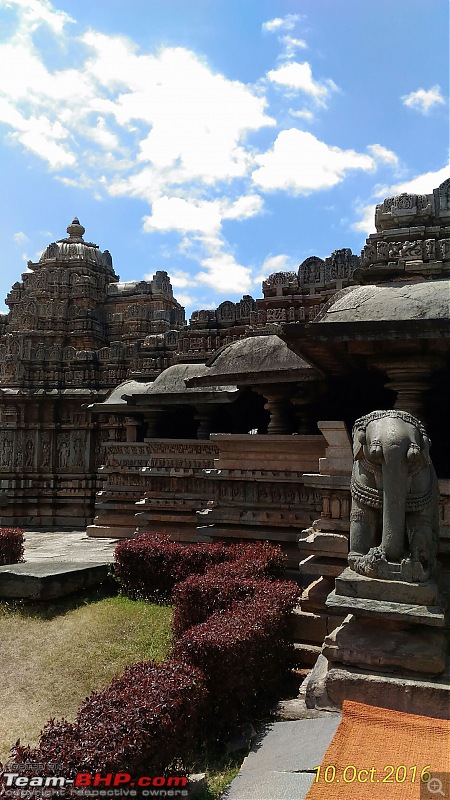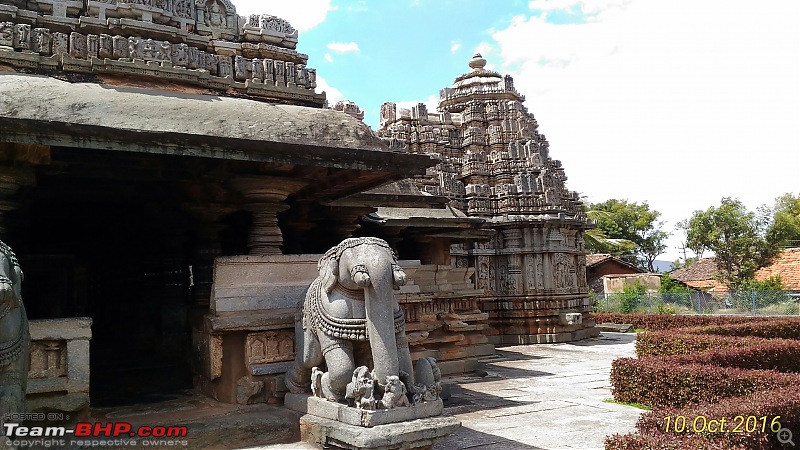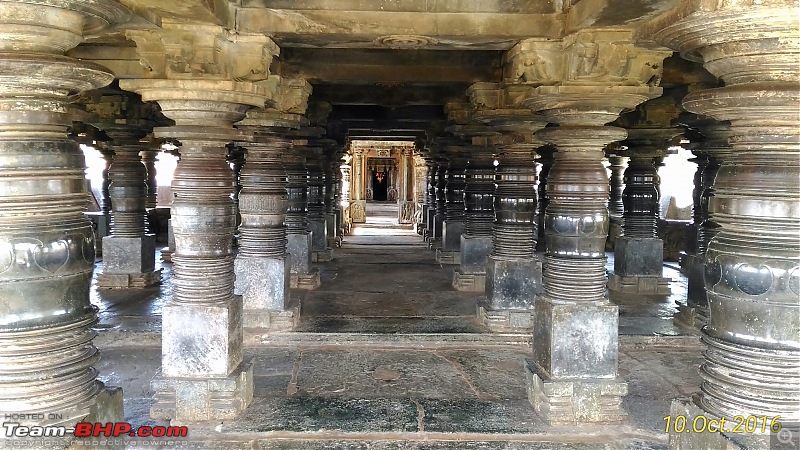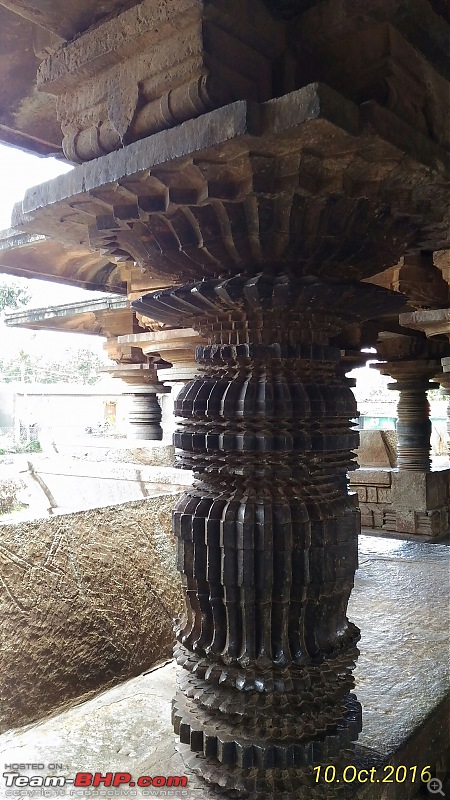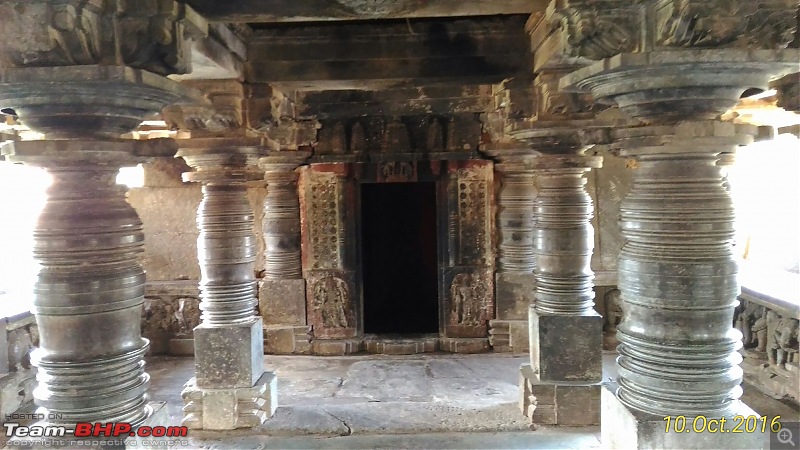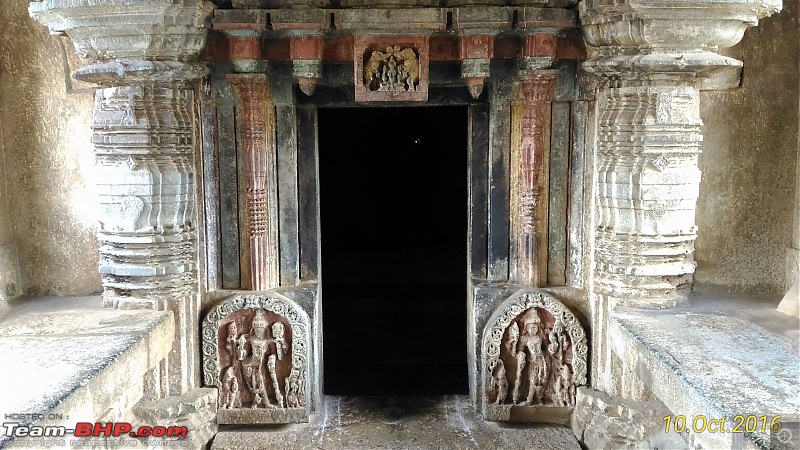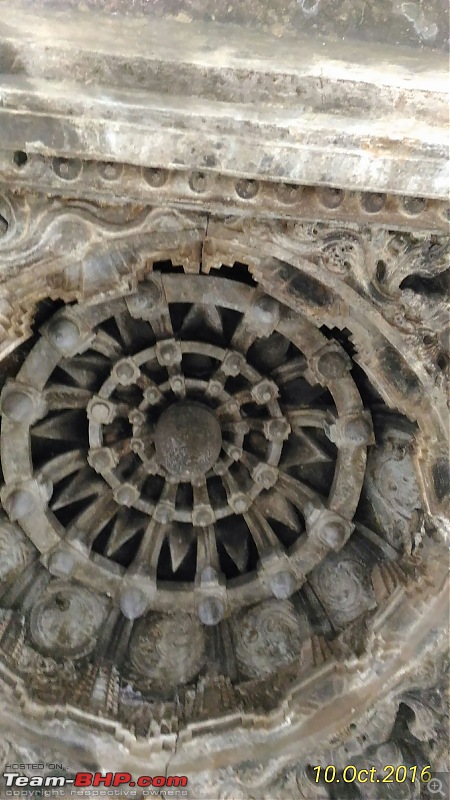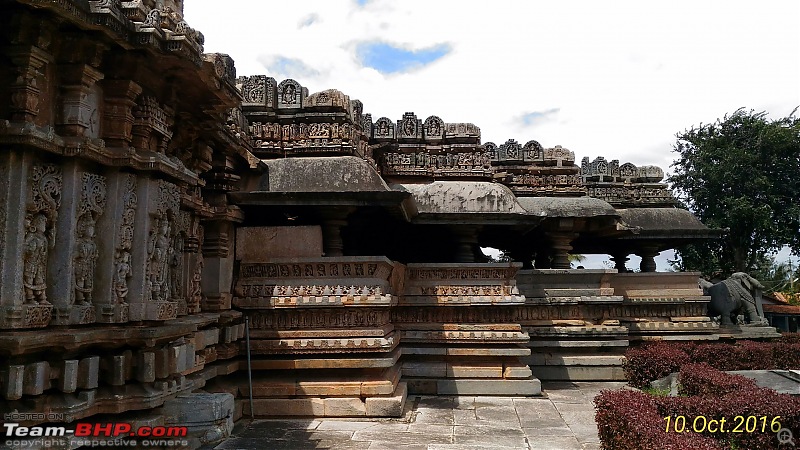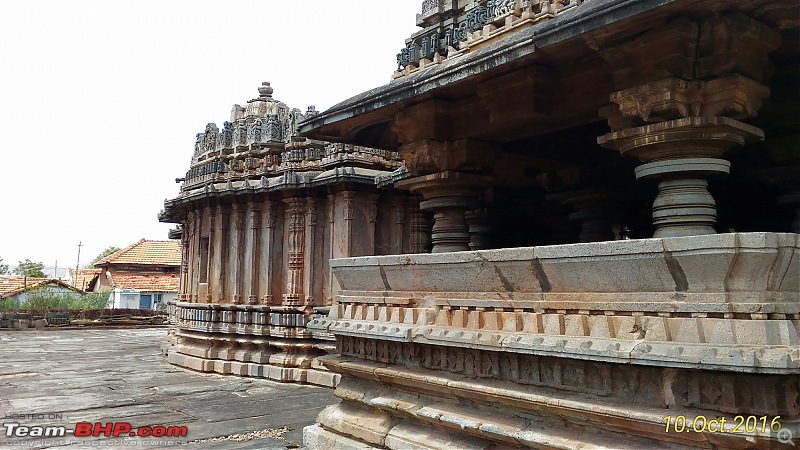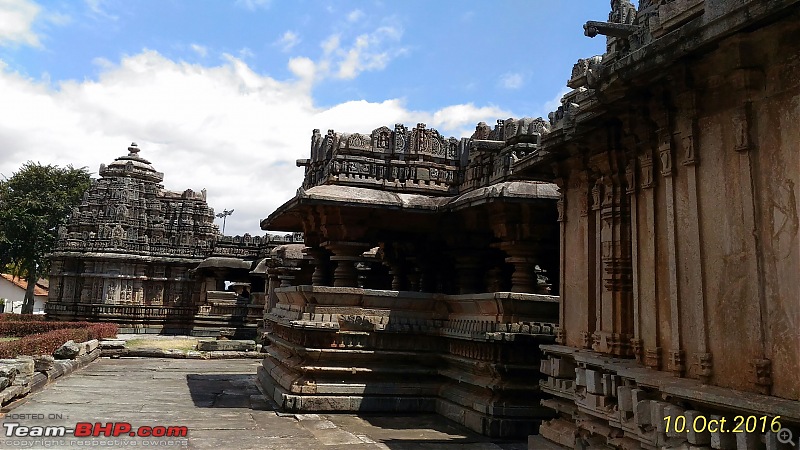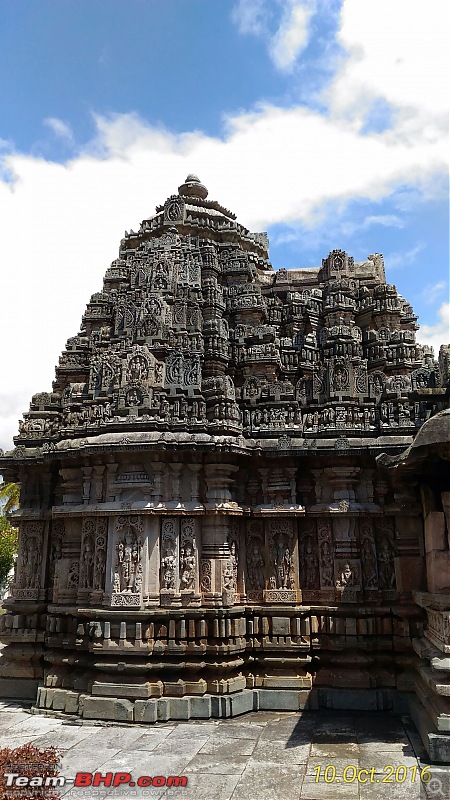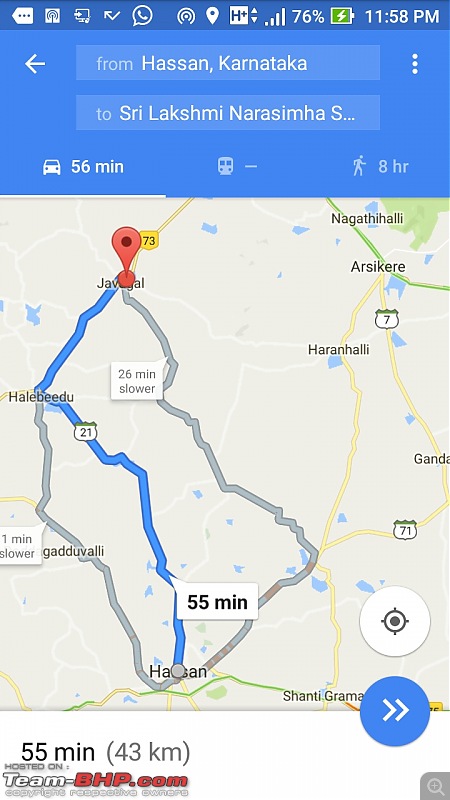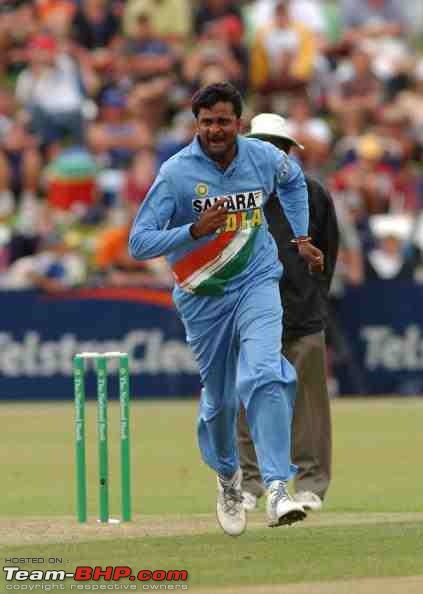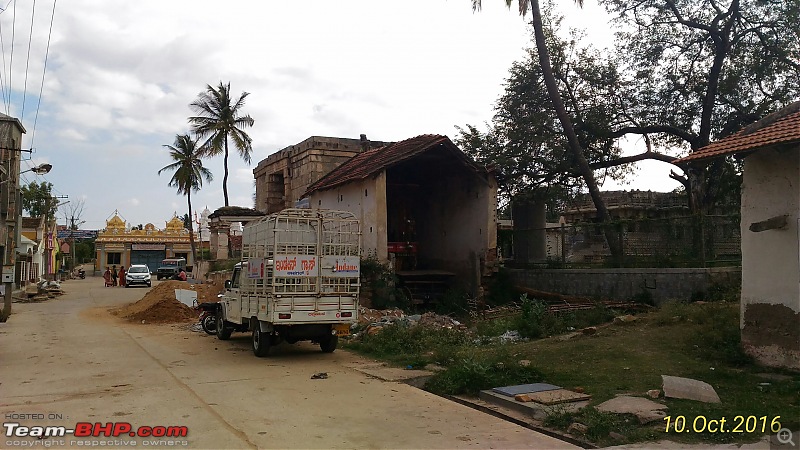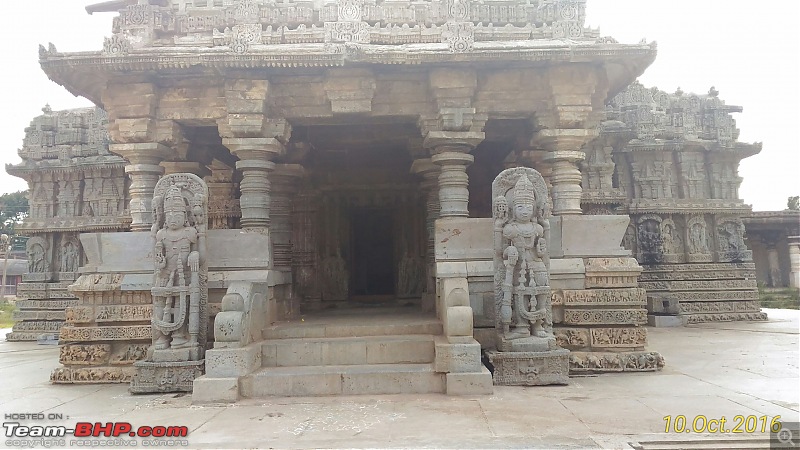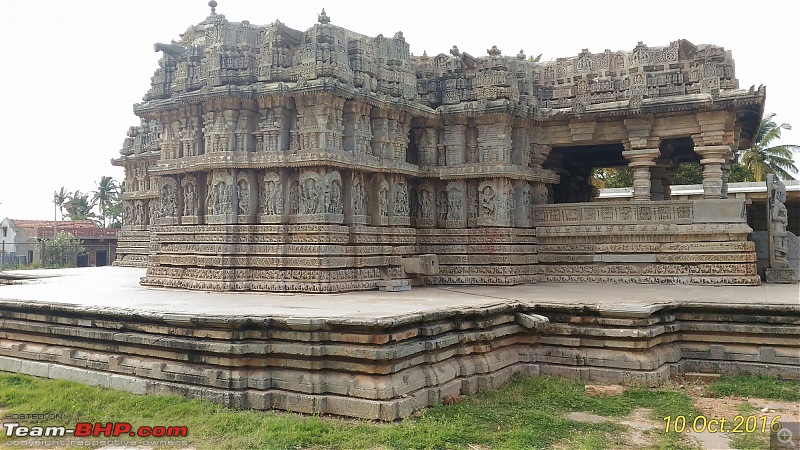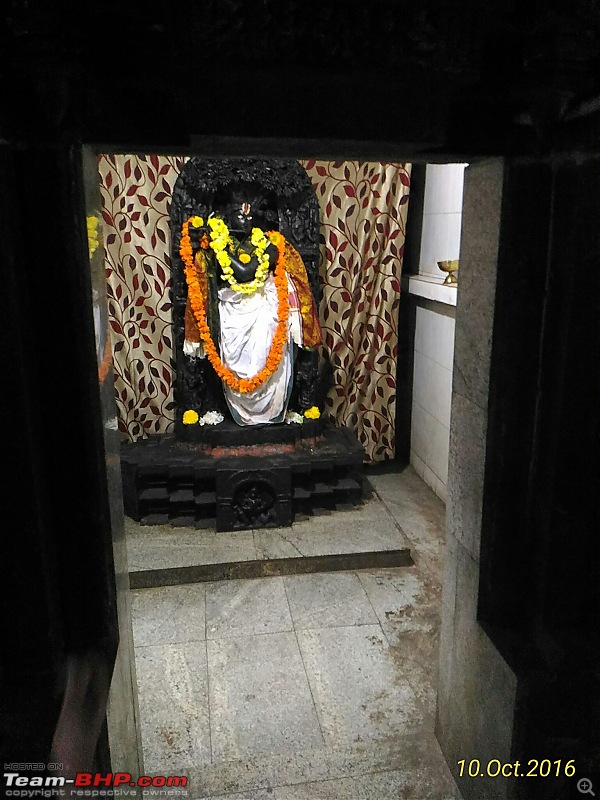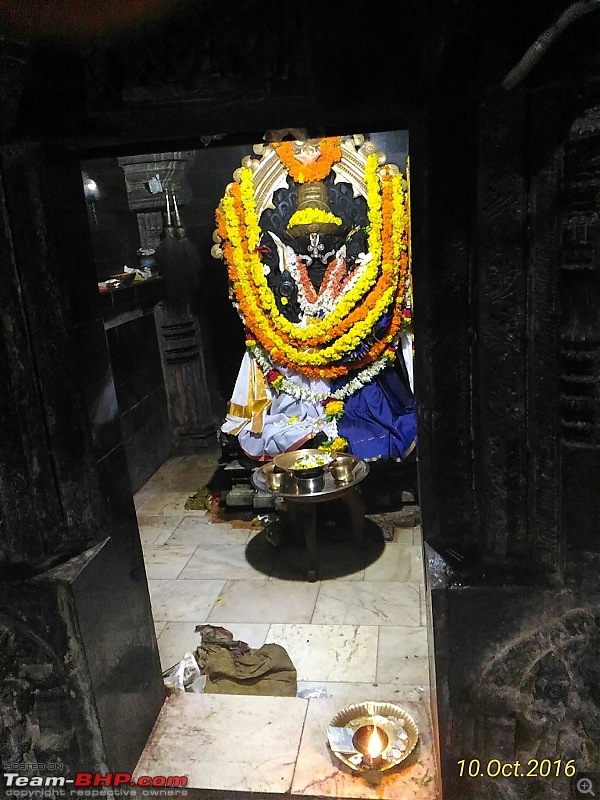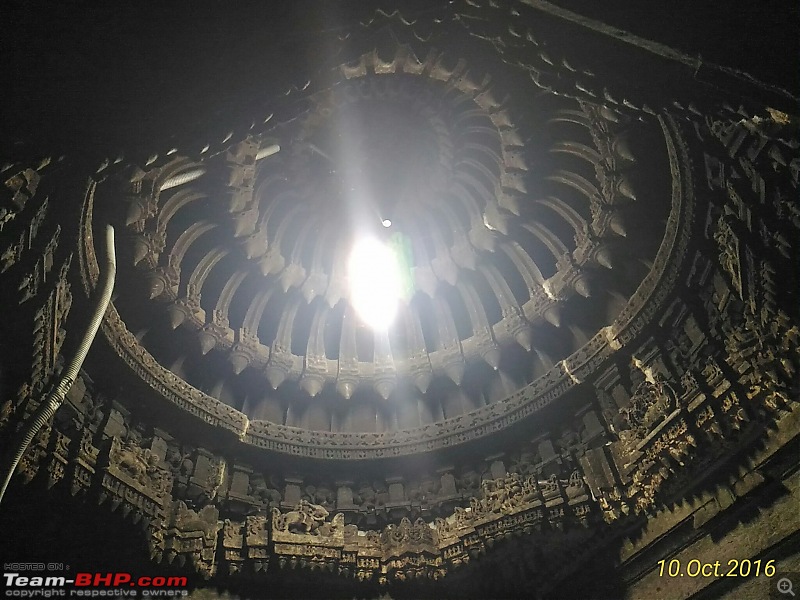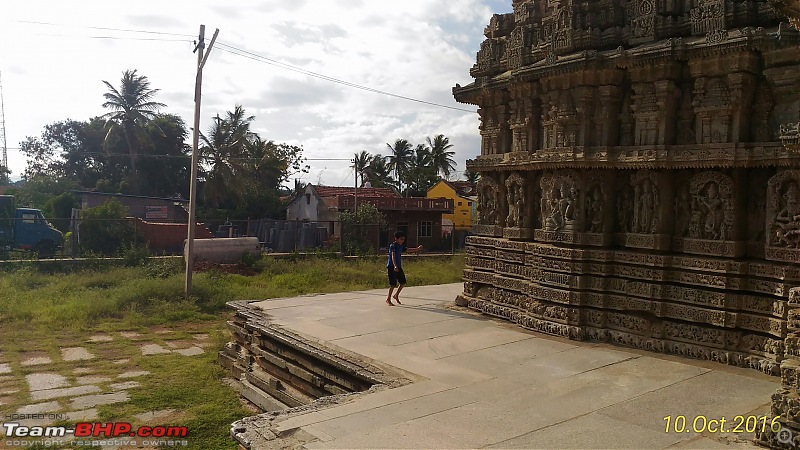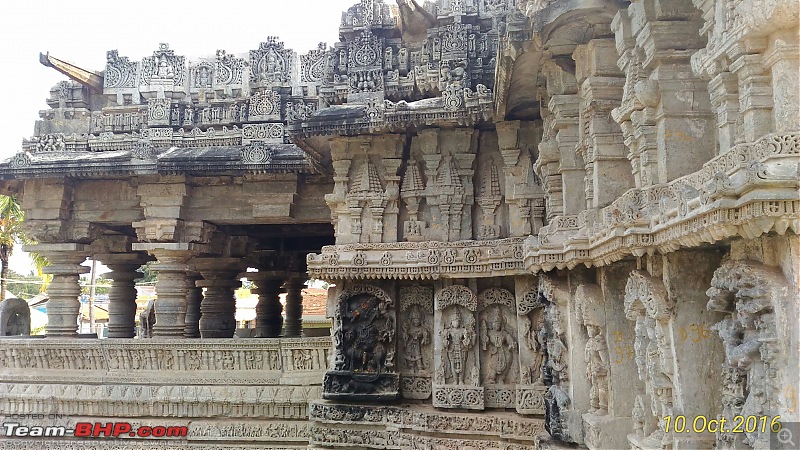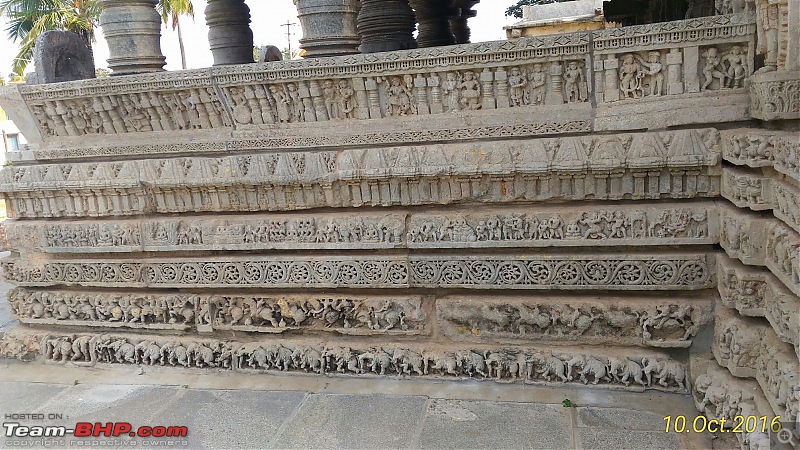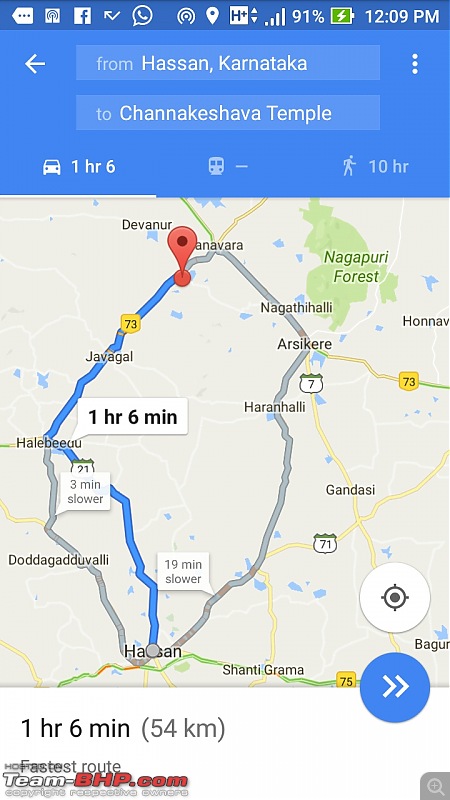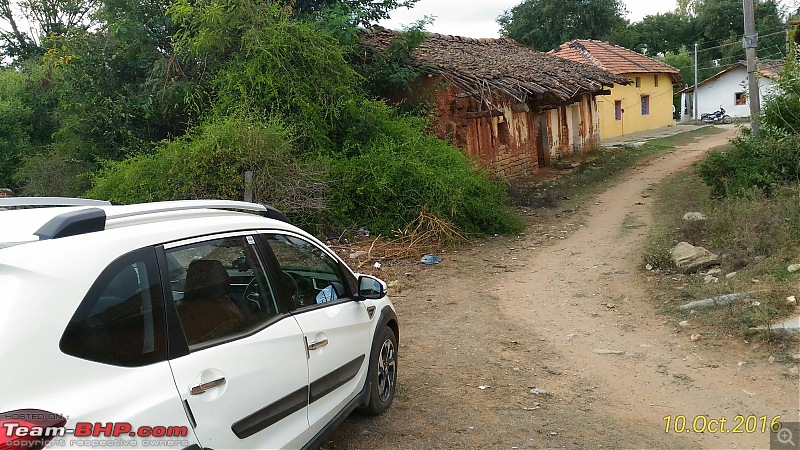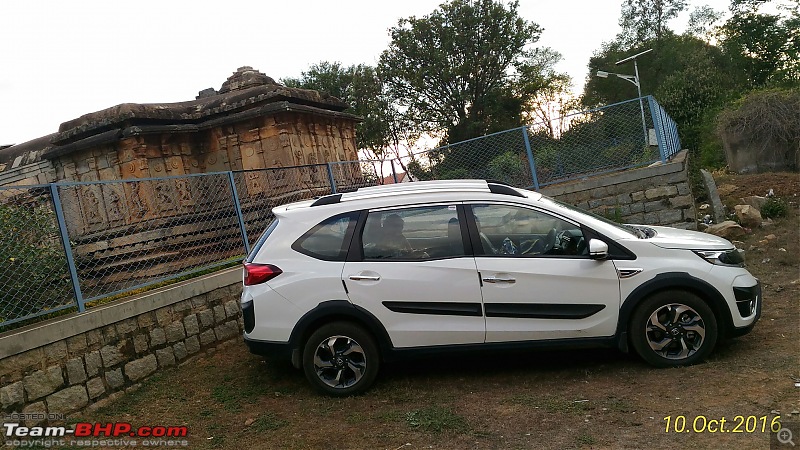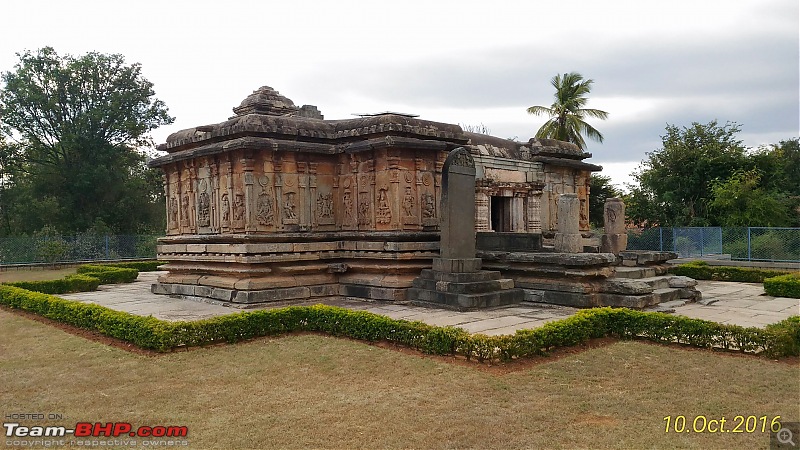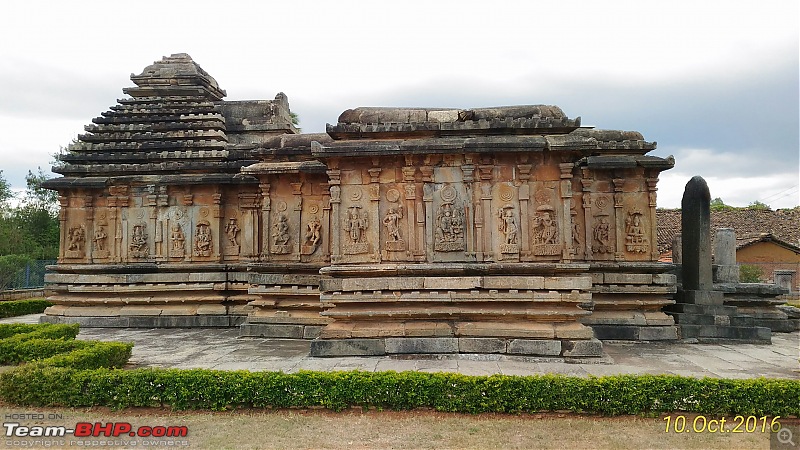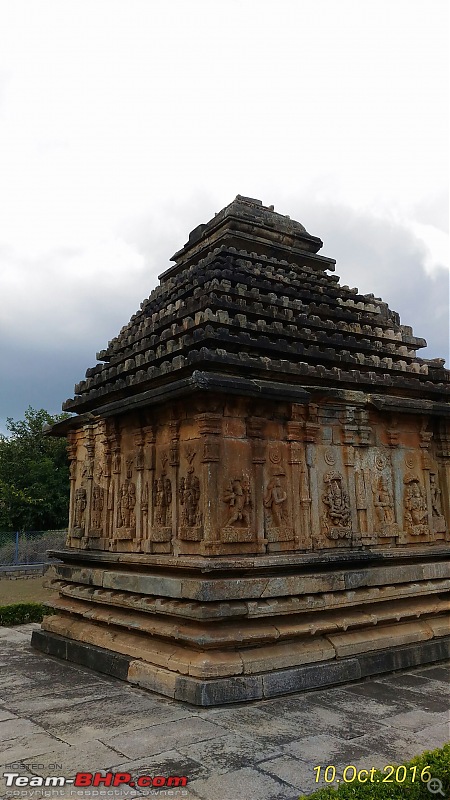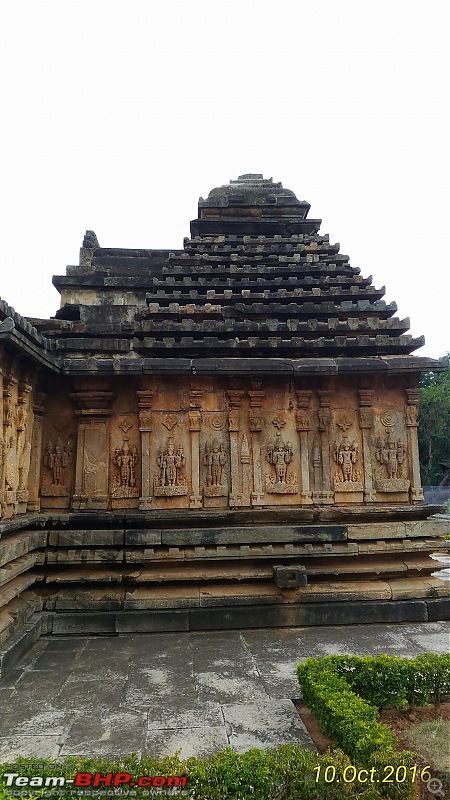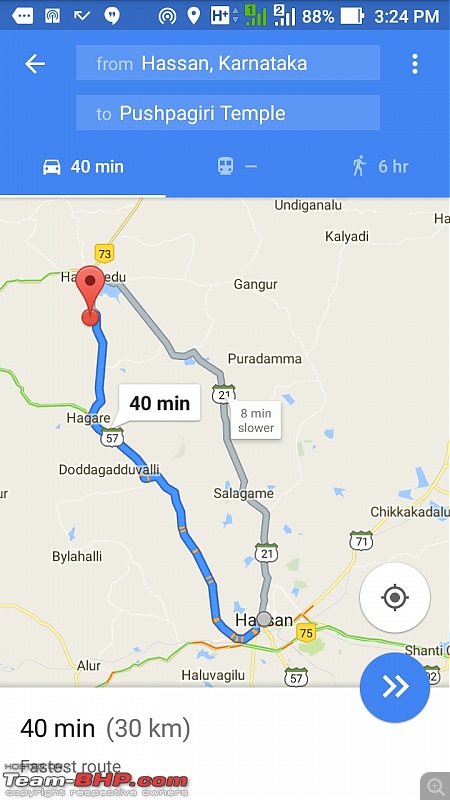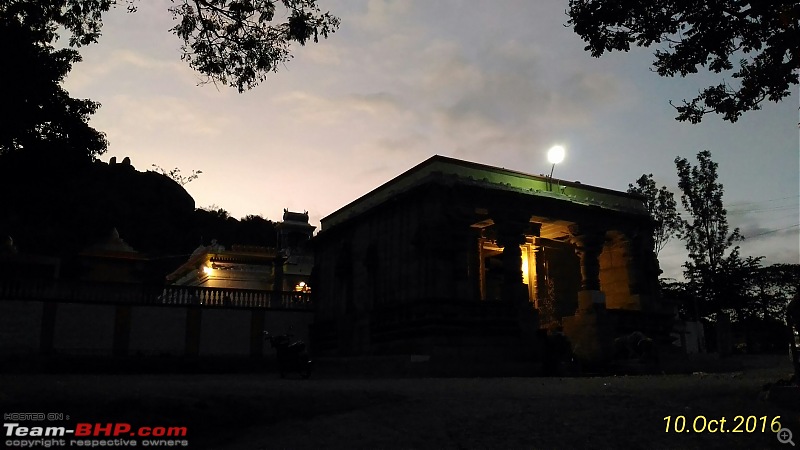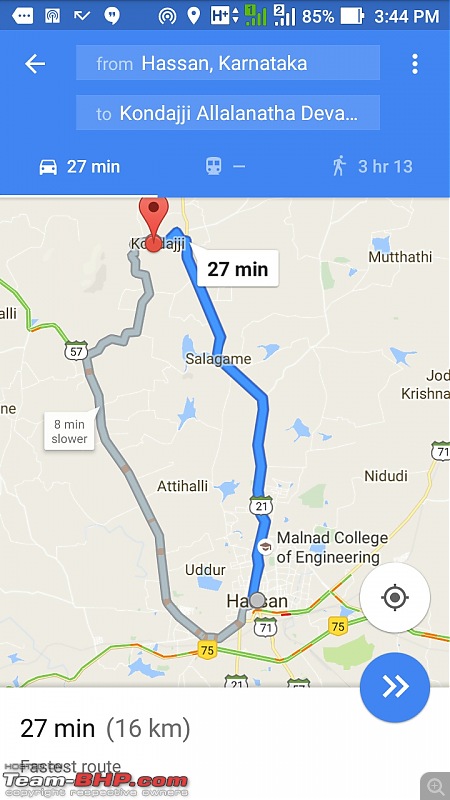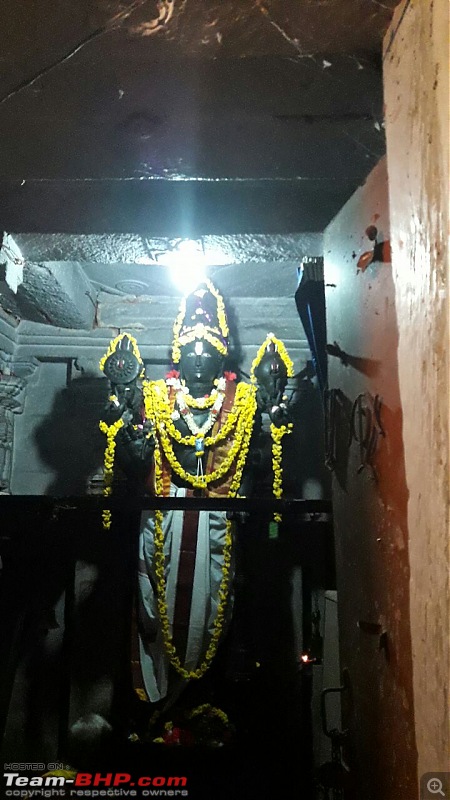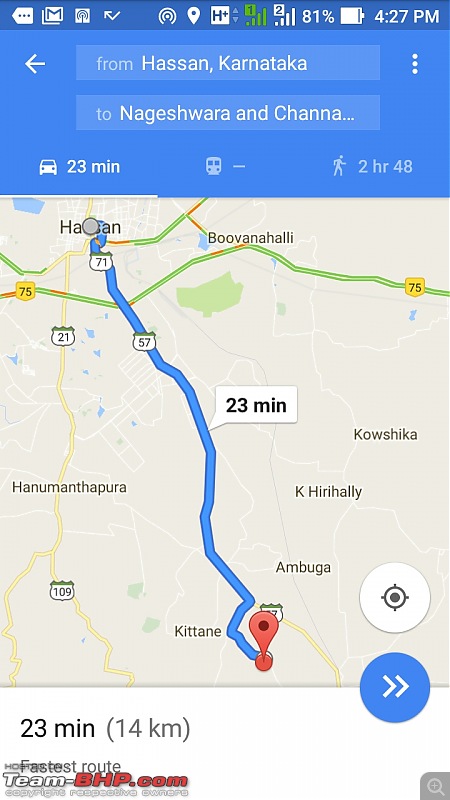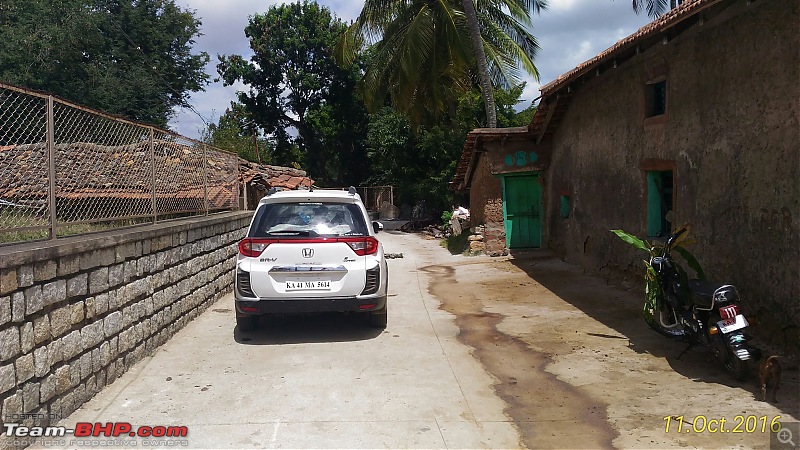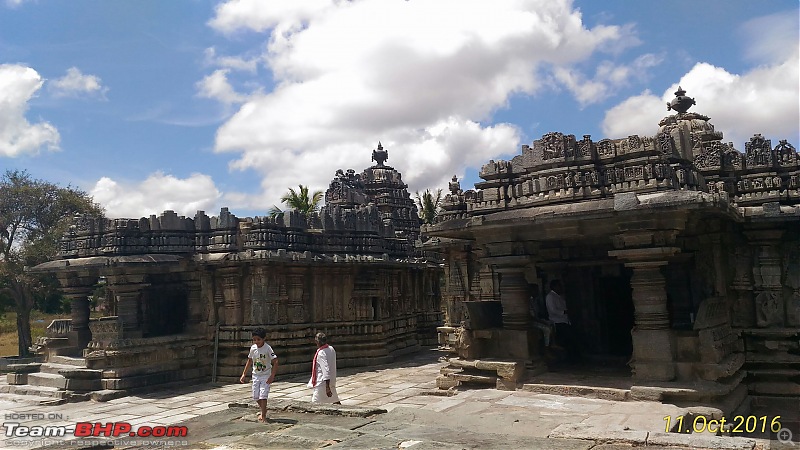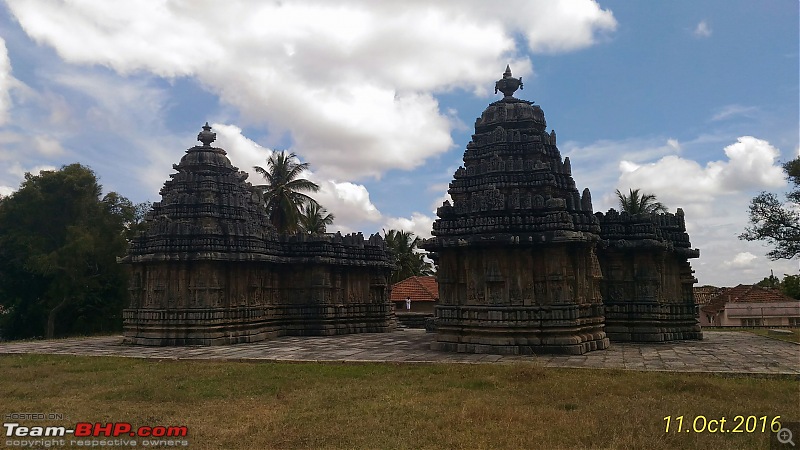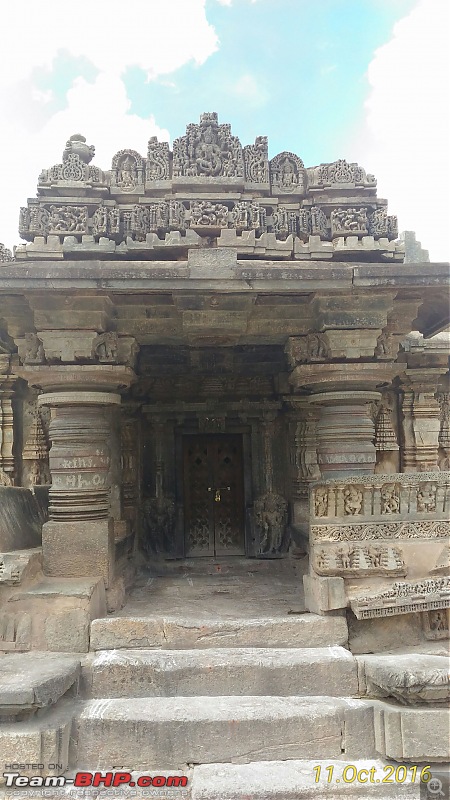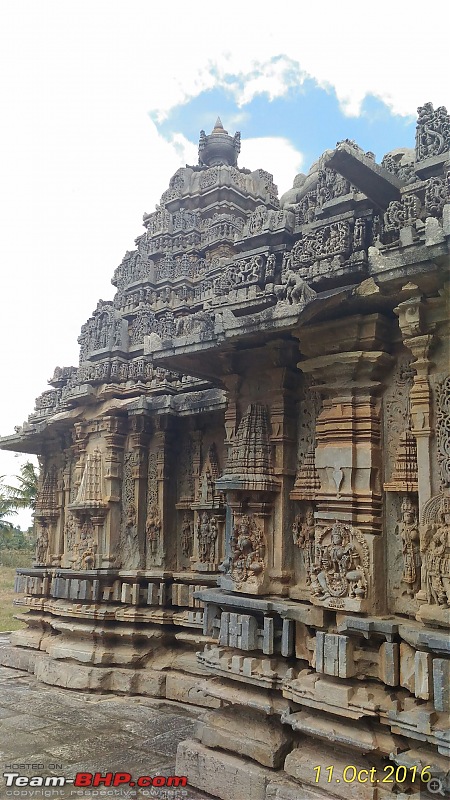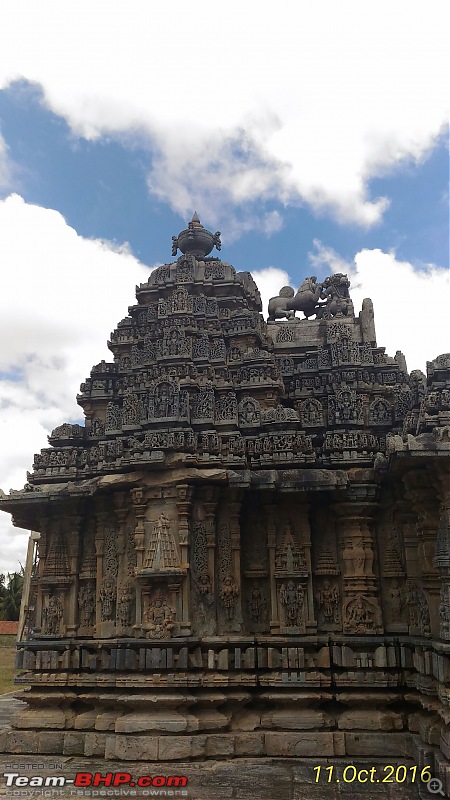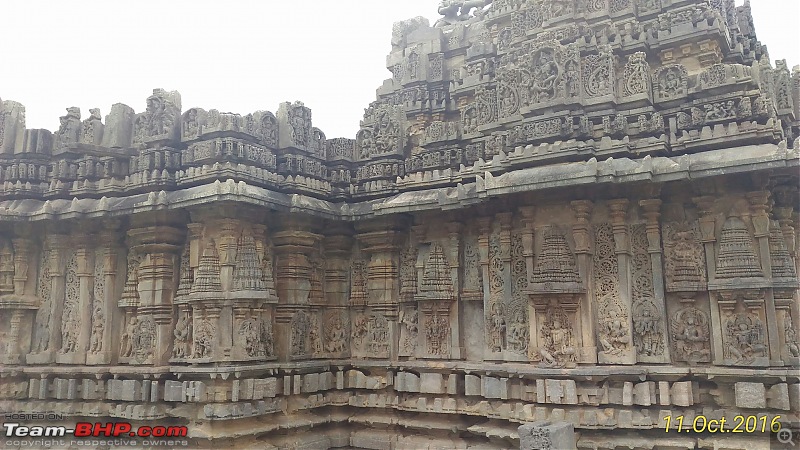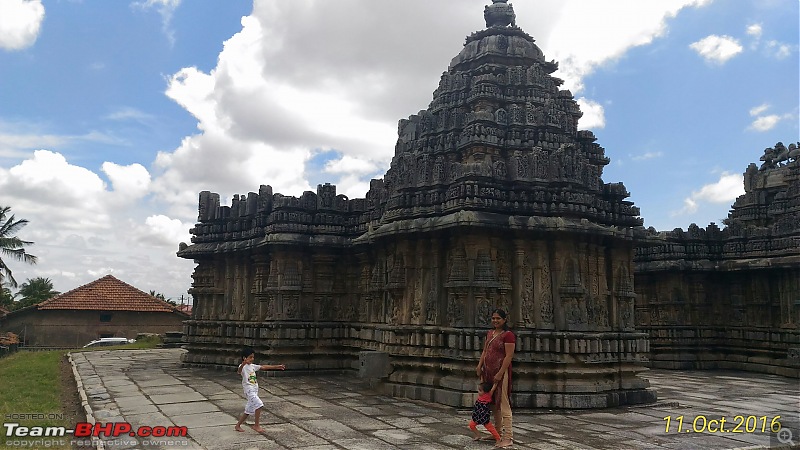We have visited Belur and Halebid many times over the years - massive temple complex with breath-taking architecture, intricate carvings and beautiful sculptures. But you also have to accept the fact that it can get crowded at times. Unless you get there first or visit during weekdays, this is likely to be the scene at Belur or Halebid -
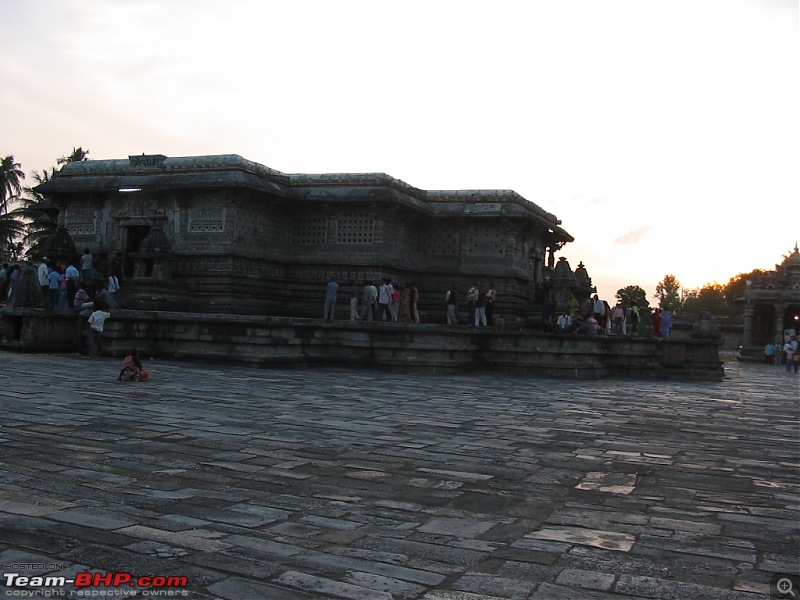
Couple of months back, we stumbled upon Somnathpura near Mysore, a less famous cousin of Belur and Halebid. It was refreshingly less crowded and we were able to take pictures like this -
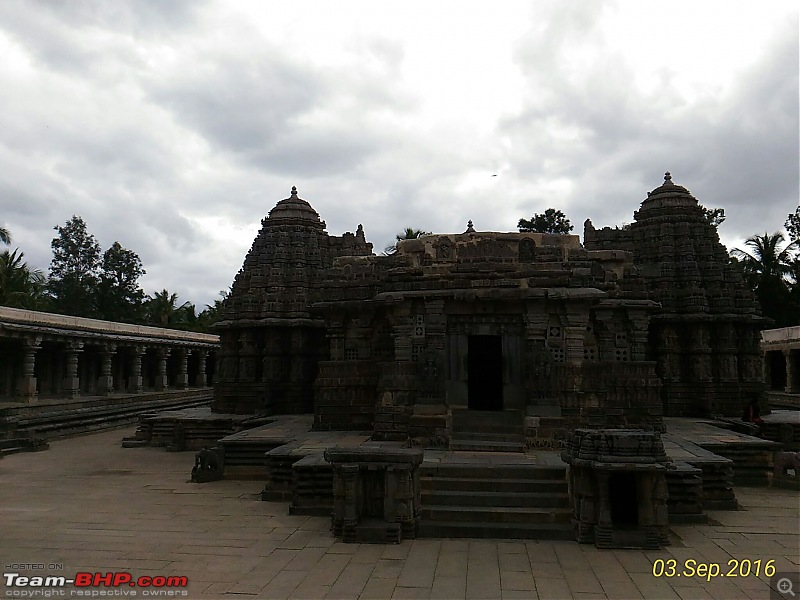
After learning from the official ASI guide at Somnathpura that there are atleast 100+ Hoysala era temples, we began our voyage of discovery with the help of Wikipedia and Google. Funnily, it led us to these threads on Team-BHP by BHPians
hotsuff and
akbaree http://www.team-bhp.com/forum/travel...a-temples.html http://www.team-bhp.com/forum/travel...a-temples.html
Made a flexible trip plan, booked a hotel at Hassan and set off. Hassan makes for the best 'base camp' because of its strategic central location to most of the temples and large choice of hotels. If you prefer staying in resorts or homestays instead, Chikmagalur (as a base camp) is a good choice too - but you probably need to cover a few extra kilometers.
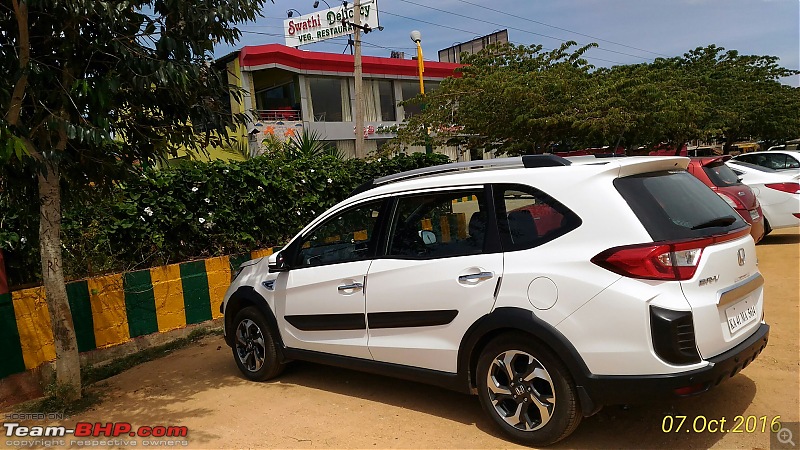
Checked into the hotel and dumped our luggage. My little daughter's idea of a "
quick lap time"

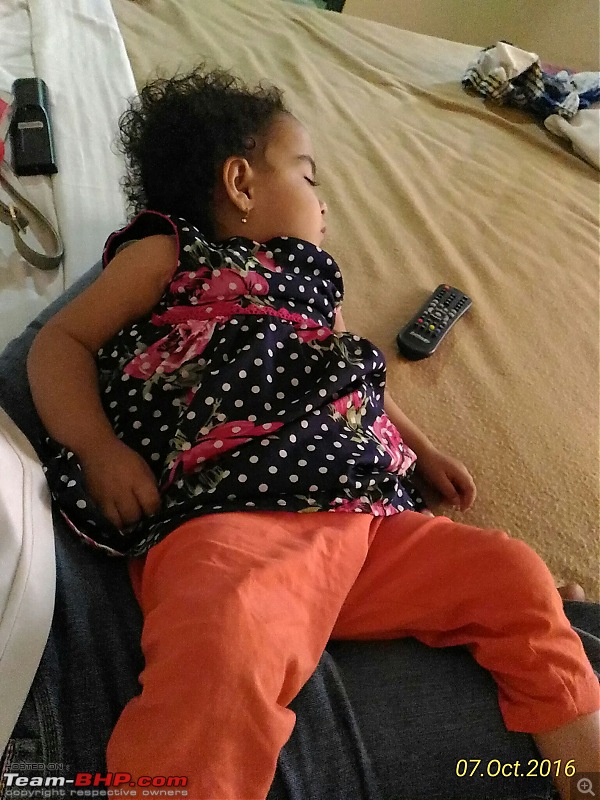
Now, during our trip, we managed to get visit just 12 or 13 lesser known Hoysala temples. But we are such big fans of Hoysala architecture that we intend to 'discover' each of these 100+ ancient structures over a period of time. After all, Bangalore is just 100 to 200 kms away and we could easily make it a weekend plan.
IMPORTANT NOTES:
1) Most temple complexes are closed by 6 PM
2) Only Hassan, Belur and Kadur have decent restaurants with clean toilets. If you have ladies on board, keep that in mind. Petrol bunks rarely have well maintained or useable toilets. You might need to go back and forth between these towns & your destination. Not a big issue though, because travel time is usually around 1 hour.
3) All you need is Google Maps, name of the village (Eg: Amruthapura) and temple (Eg: Amrutheshwara Temple). Be prepared to ask locals for directions - because many times, Google Maps can get you to the village but not the temple complex. Don't expect signboards once you get to the village. Approach "road" to the temple complex can be as narrow as the width of your car.
4) Although the temple complex is open, the temple doors are likely to be closed. But you will find village elders around the temple who will gladly get the keys and open the doors for you.
5) Thanks to Pradhan Mantri Gram Sadak Yojna, most of the roads leading to the temples are smooth. Expect average speeds of 45 kmph and plan accordingly.
6) Most of these ancient structures are protected by law, and maintained by ASI. Many of these temple complexes will have well-maintained lawns. Very clean and kid friendly. However, some of these structures are maintained by rich private individuals and receive no funding from the Government.
7) Many of the temple complexes have official and unofficial guides (Pujari himself or a local). If you are offered an unsolicited guided tour, take it. You pay what you are comfortable paying.
8) Although you are likely to be the only person/family in the entire temple complex, it "feels" very safe there. The temple complex is surrounded by village houses.
9) For some reason, most of the priests and guides request you NOT to take photos of the idols. Others are OK with it, but ask you to switch off the camera flash.
10) The temples are made out of a type of soft rock called
soapstone - it is a mix of silica and talc. In natural form, it is smooth and soapy to touch (hence the name soapstone). Soapstone + scientific Hoysala architecture means inside the temple is very cool and sometimes breezy (cross ventilation), even in the afternoon
Trip to these Hoysala temples is most suited for:
a) Amateur photographers
b) Driving enthusiasts (because of smooth narrow winding roads)
c) Religious types

d) Fans of architecture, historical monuments, culture etc.
Toddlers and small kids will have a ball, because of wide open 'play area'. Older kids might find this monotonous and boring though.

 (13)
Thanks
(13)
Thanks

 (25)
Thanks
(25)
Thanks

 (13)
Thanks
(13)
Thanks

 (12)
Thanks
(12)
Thanks

 (13)
Thanks
(13)
Thanks

 (10)
Thanks
(10)
Thanks

 (11)
Thanks
(11)
Thanks

 (12)
Thanks
(12)
Thanks

 (11)
Thanks
(11)
Thanks

 (11)
Thanks
(11)
Thanks

 (12)
Thanks
(12)
Thanks

 (9)
Thanks
(9)
Thanks

 (10)
Thanks
(10)
Thanks

 (11)
Thanks
(11)
Thanks

 (18)
Thanks
(18)
Thanks










